Optofluidic Raman-activated cell sorting for targeted genome retrieval or cultivation of microbial cells with specific functions
Roman Stocker, Kang Soo Lee, Fátima C. Pereira, Márton Palatinszky, Lars Behrendt, Uria Alcolombri, David Berry, Michael Wagner
Optofluidic Raman-activated cell sorting
Microbial cells
Metabolic roles
Automated sorting
Downstream DNA analysis




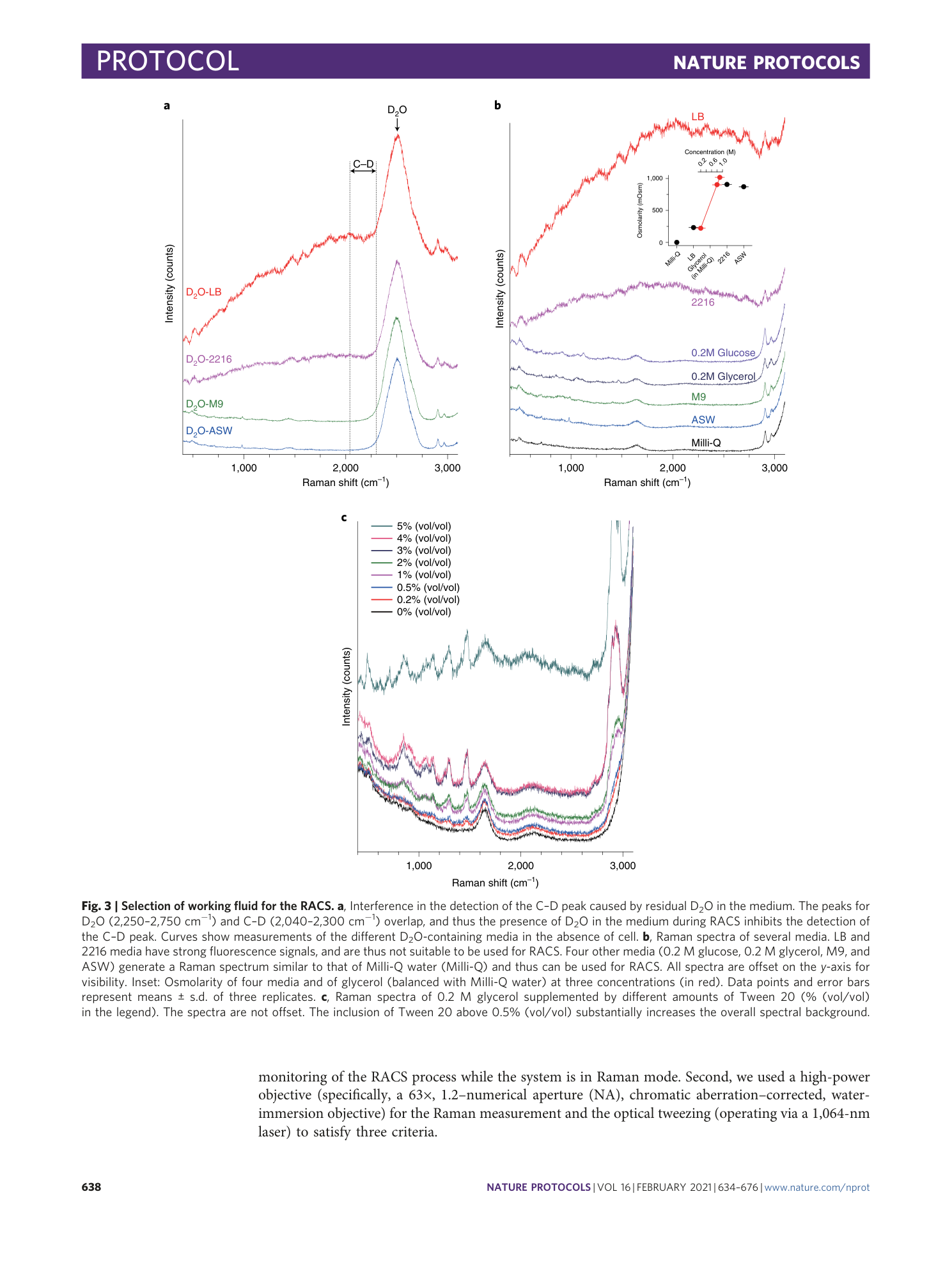

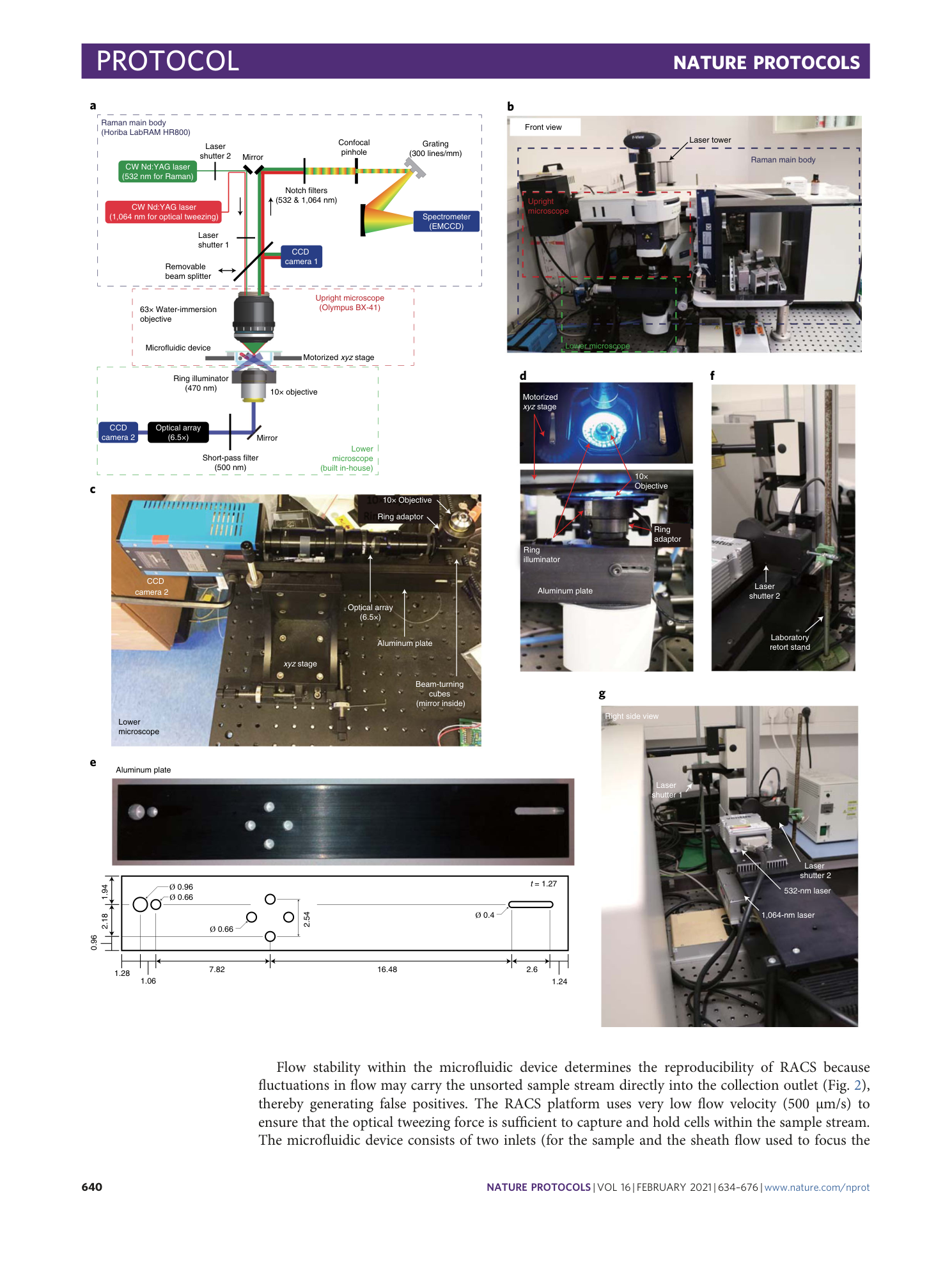


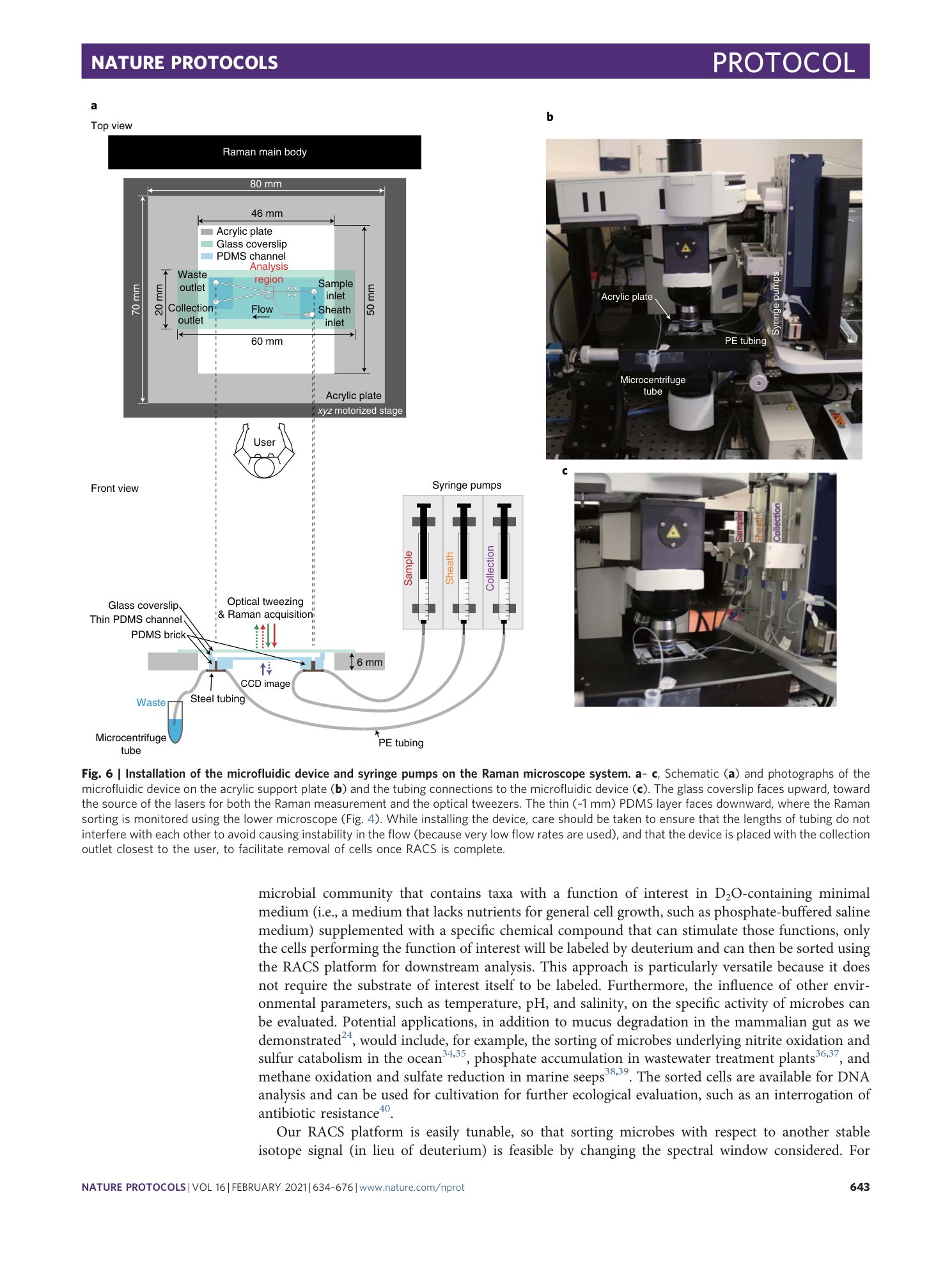
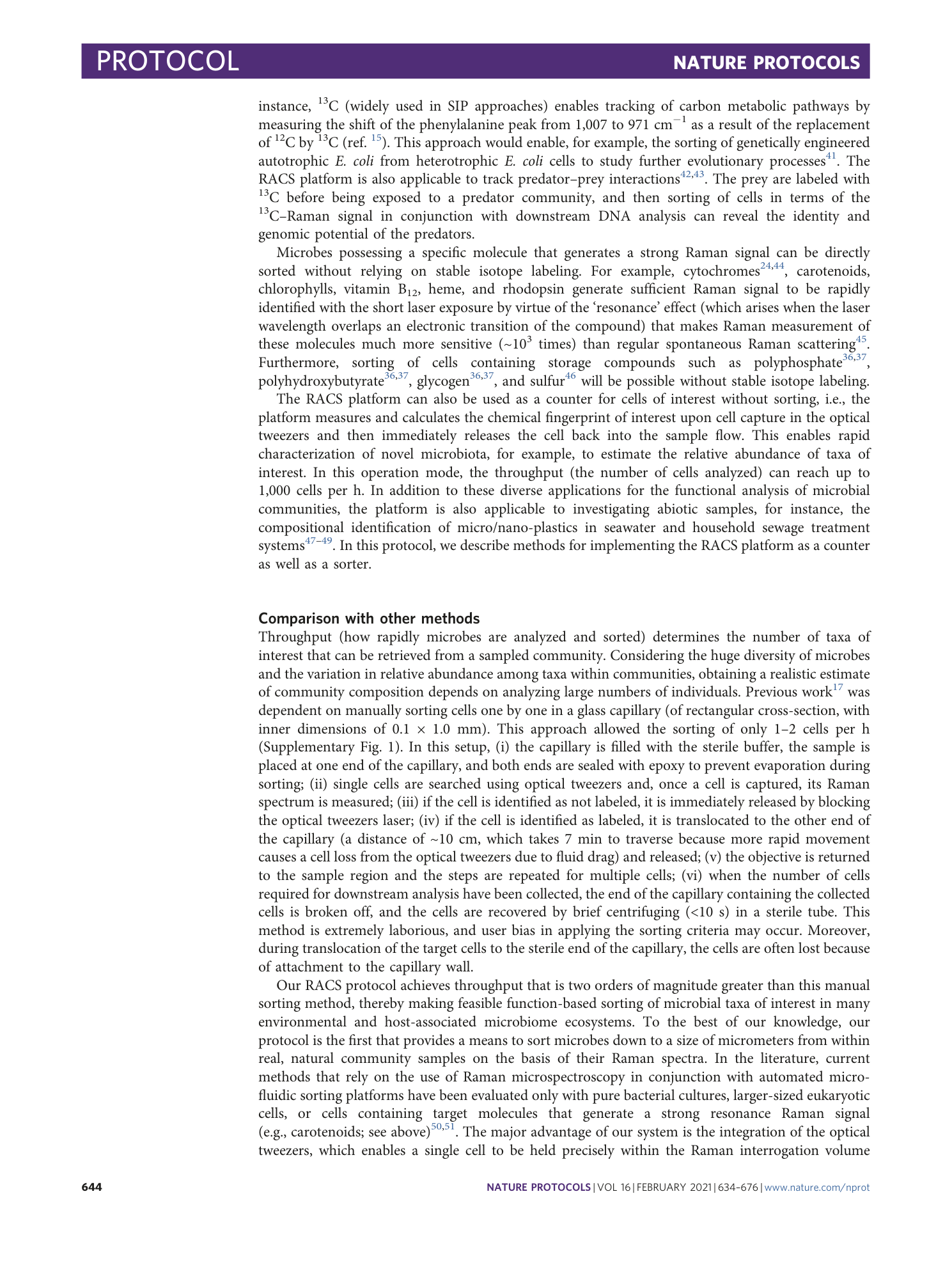
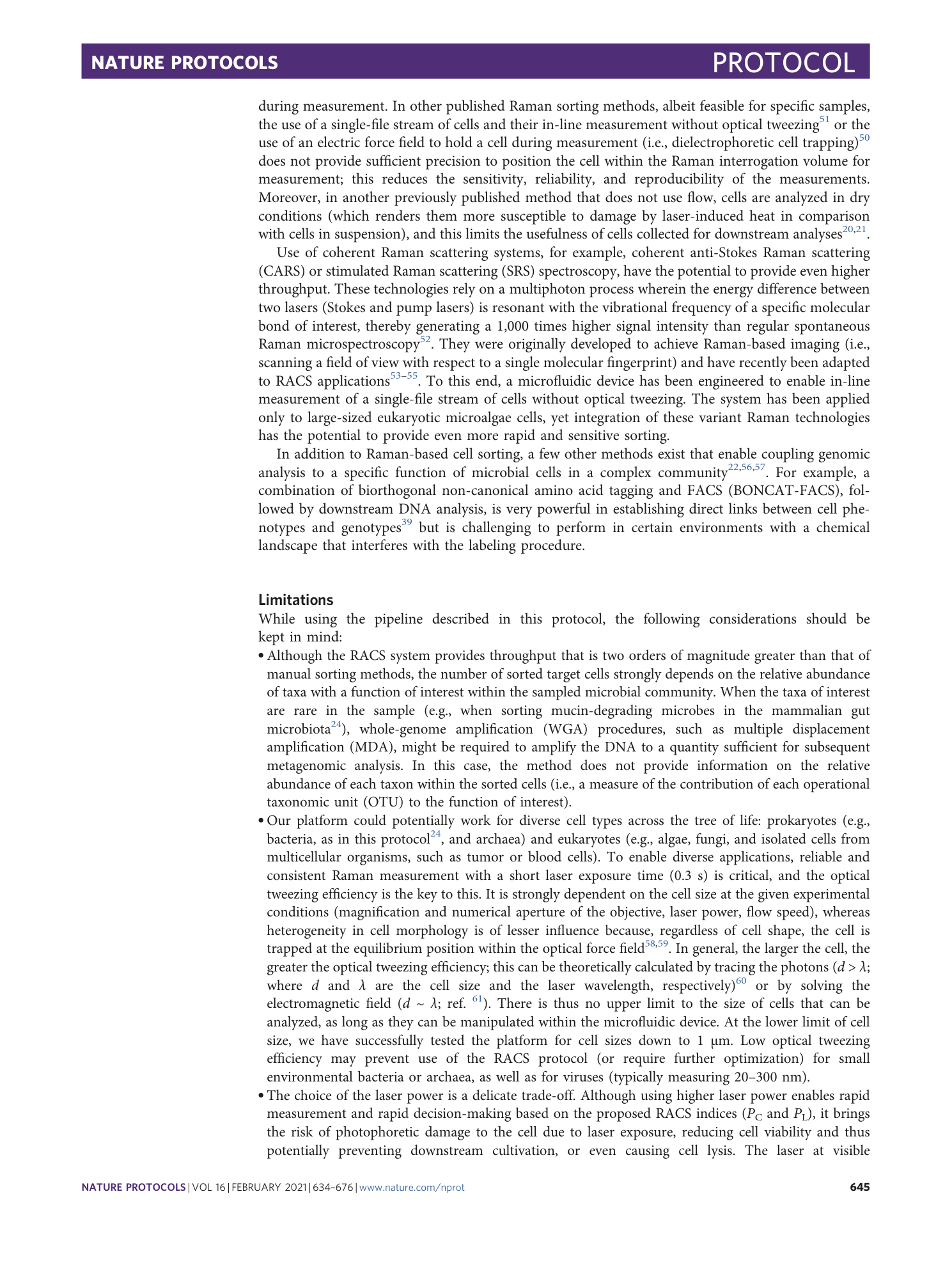
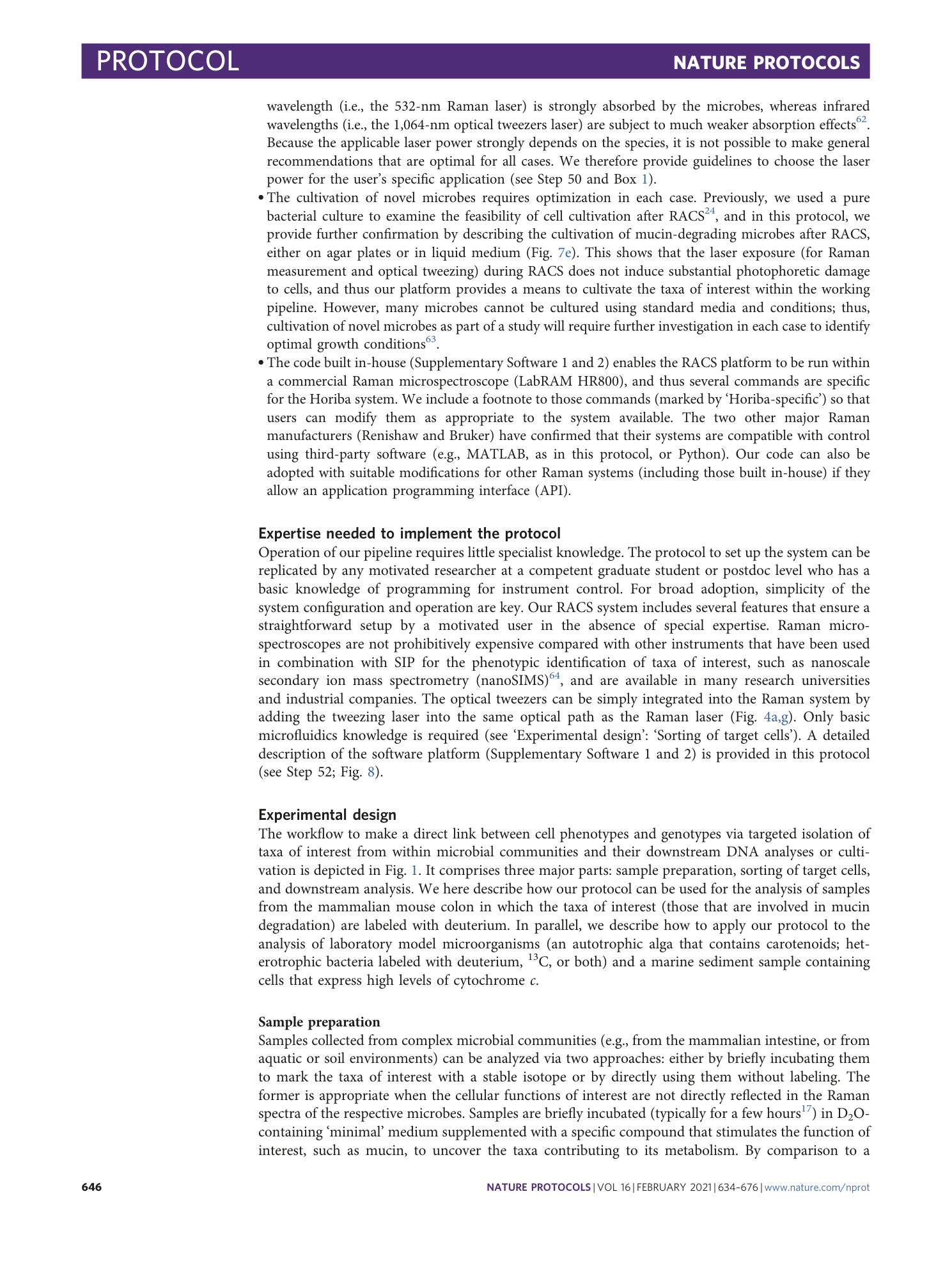
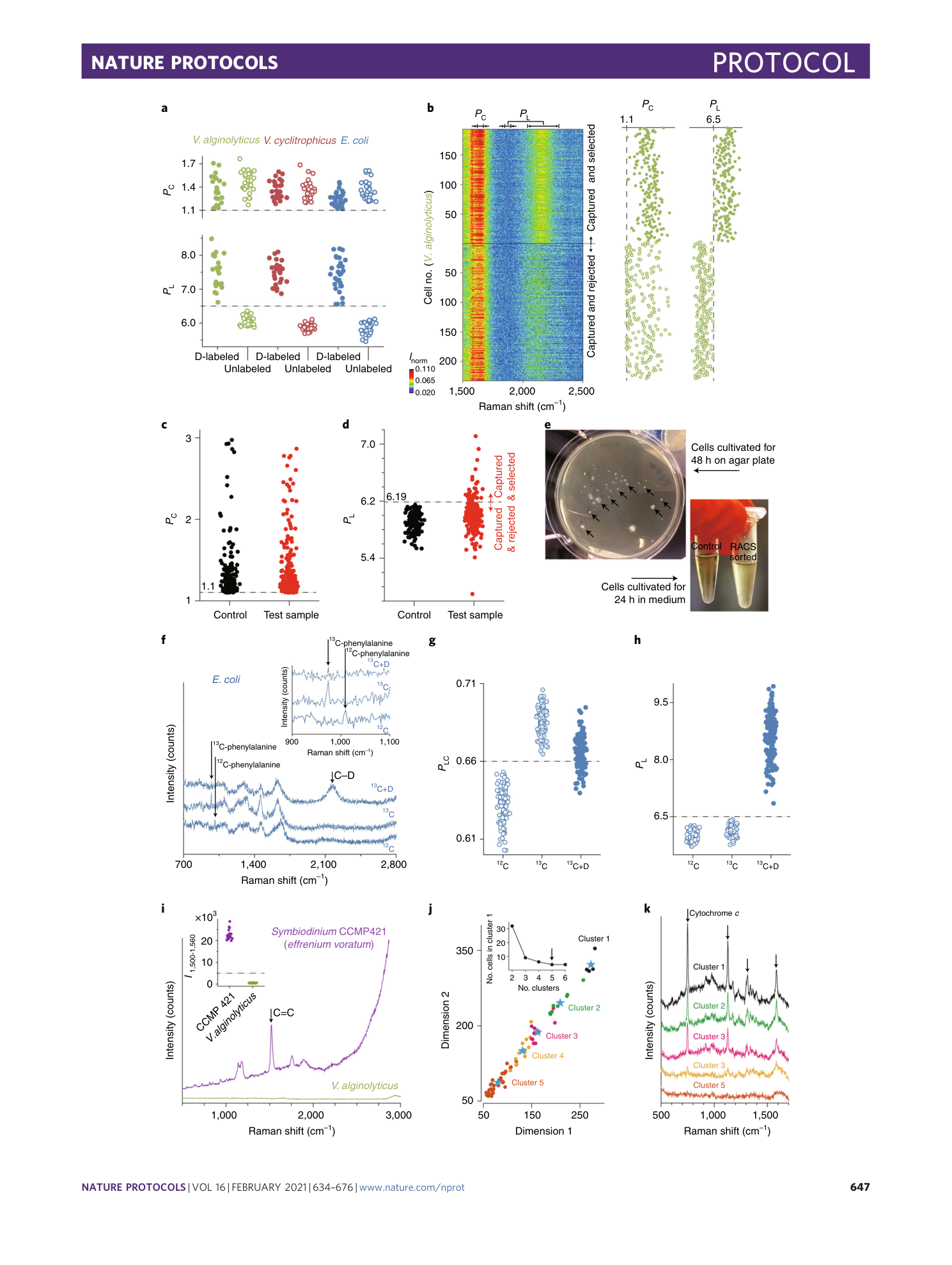
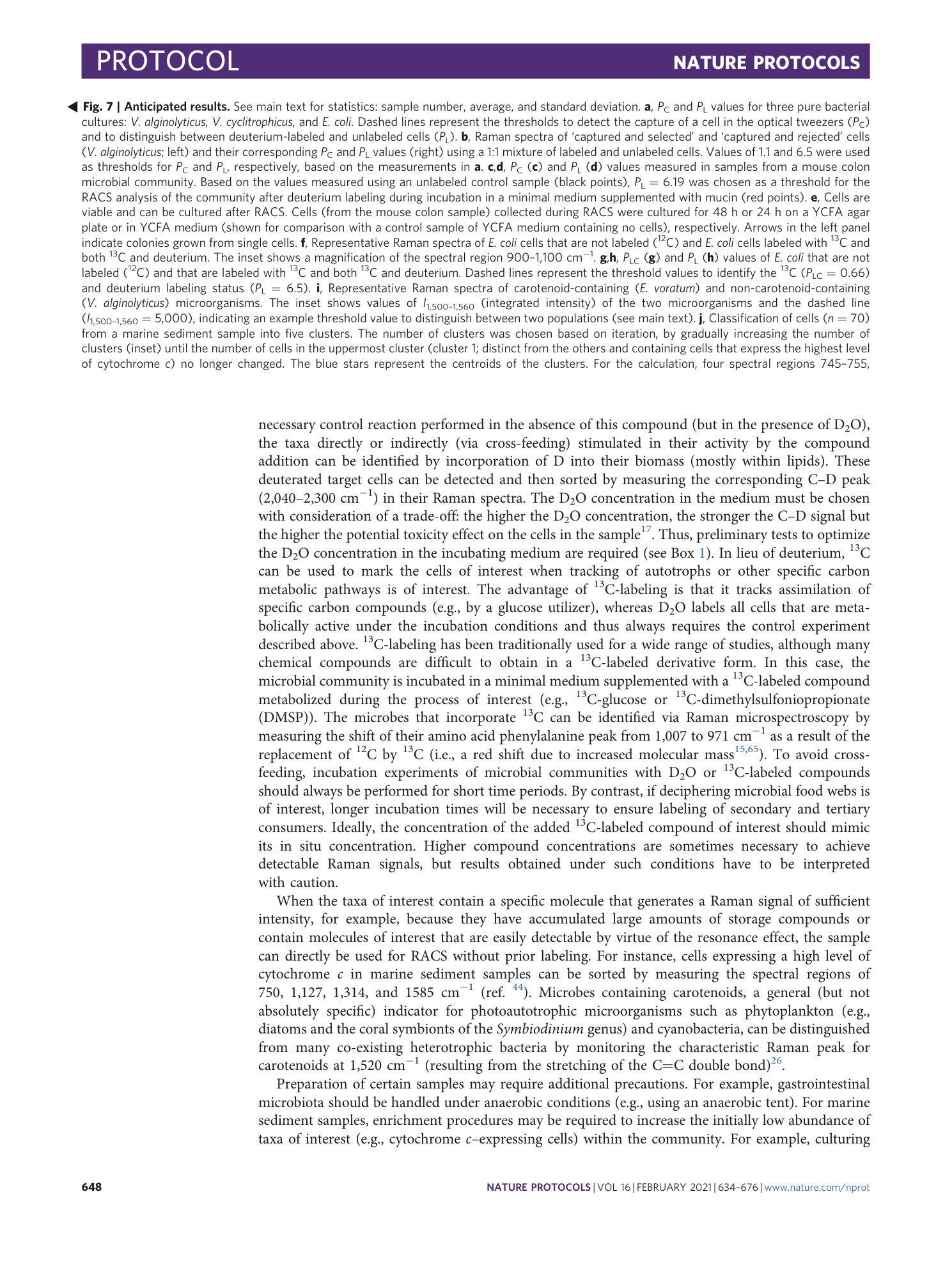
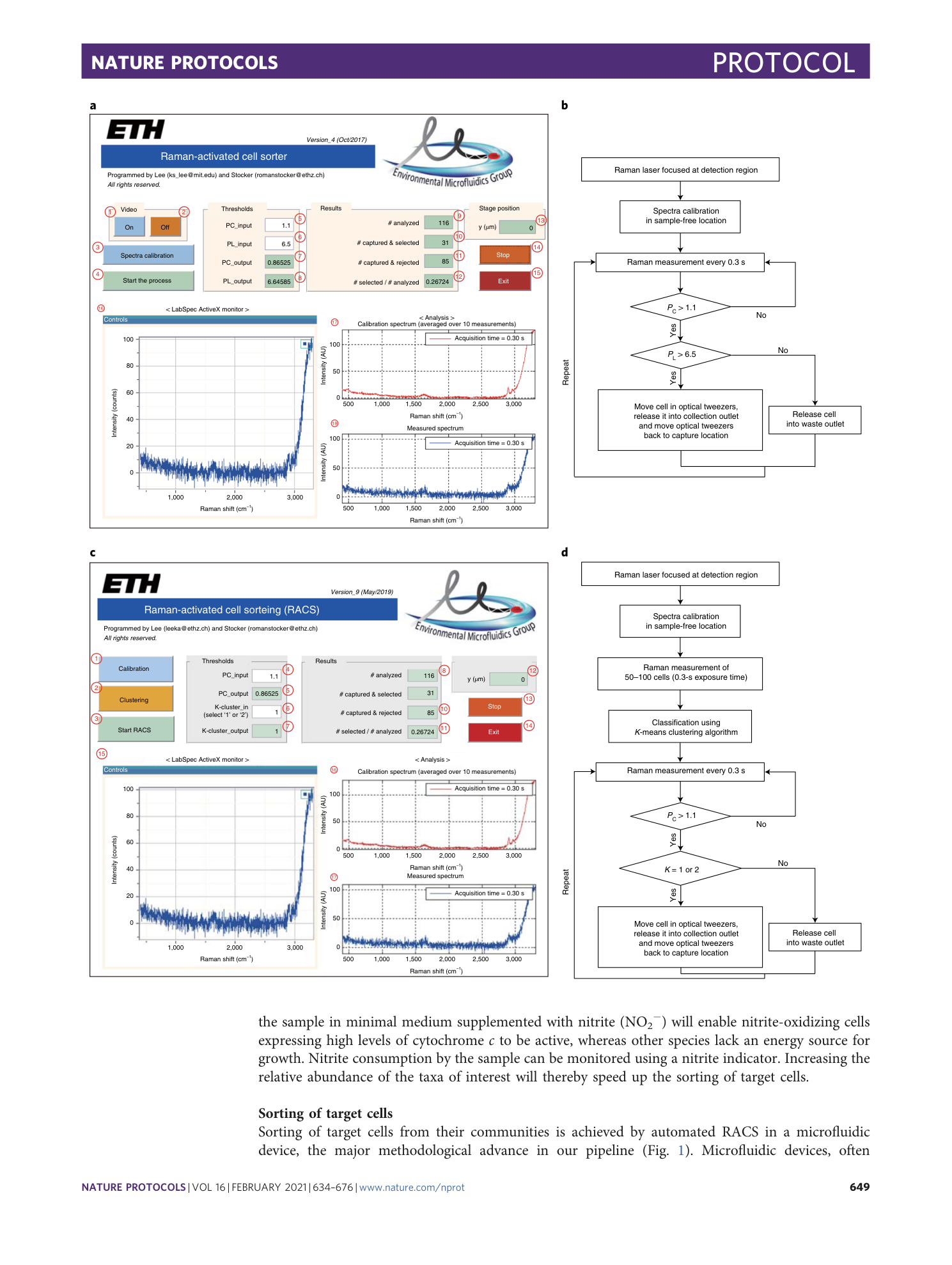
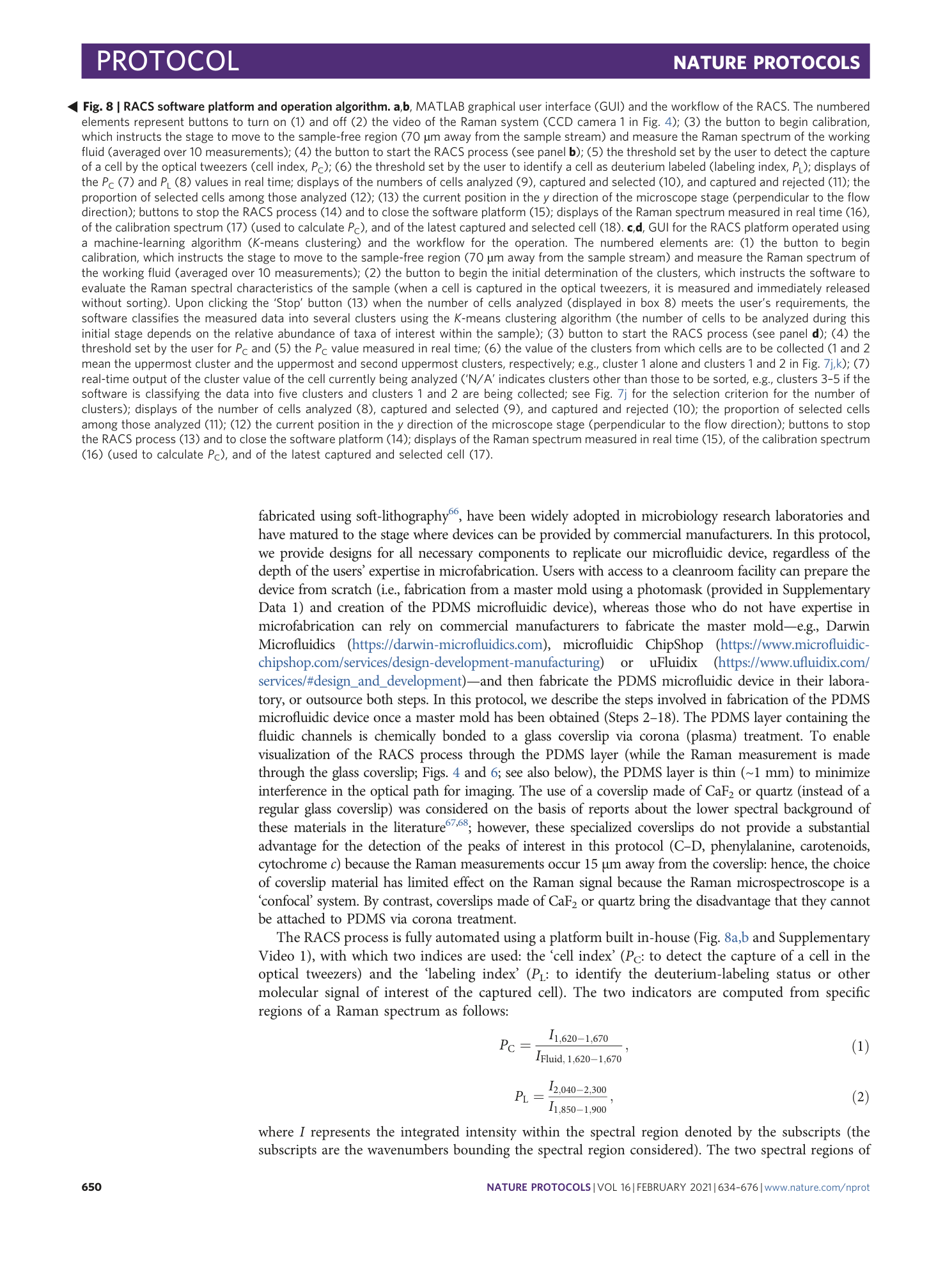
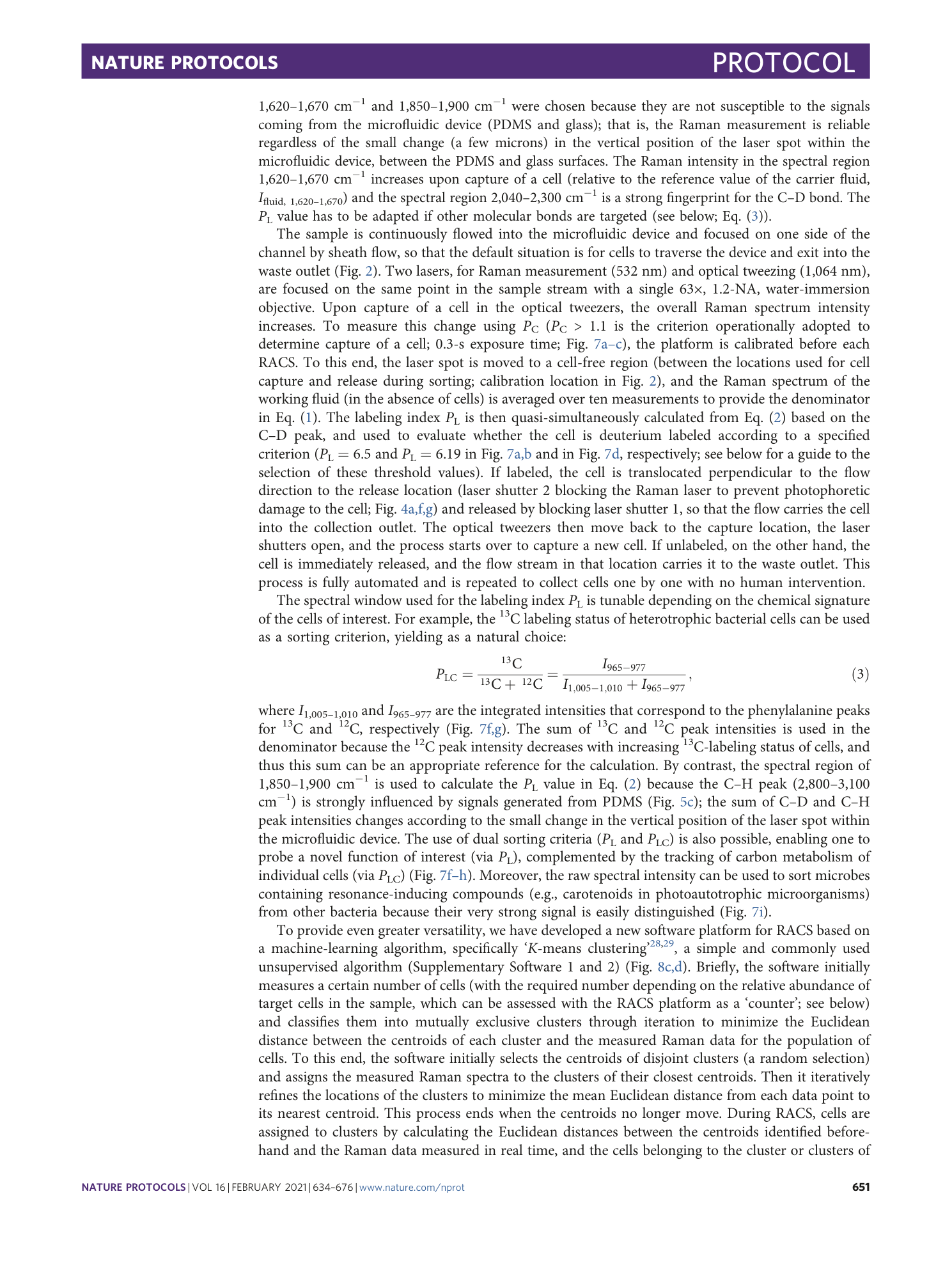
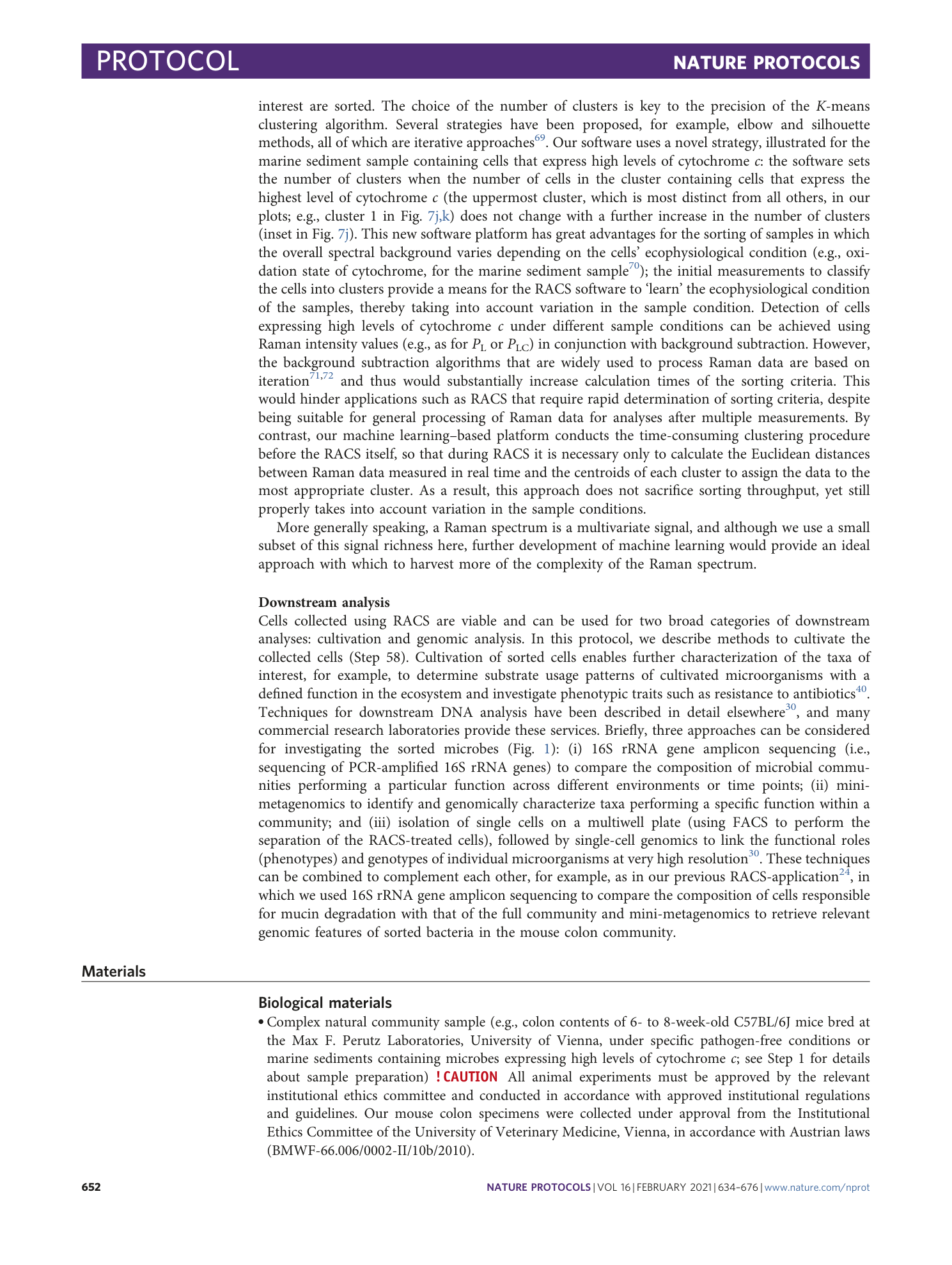
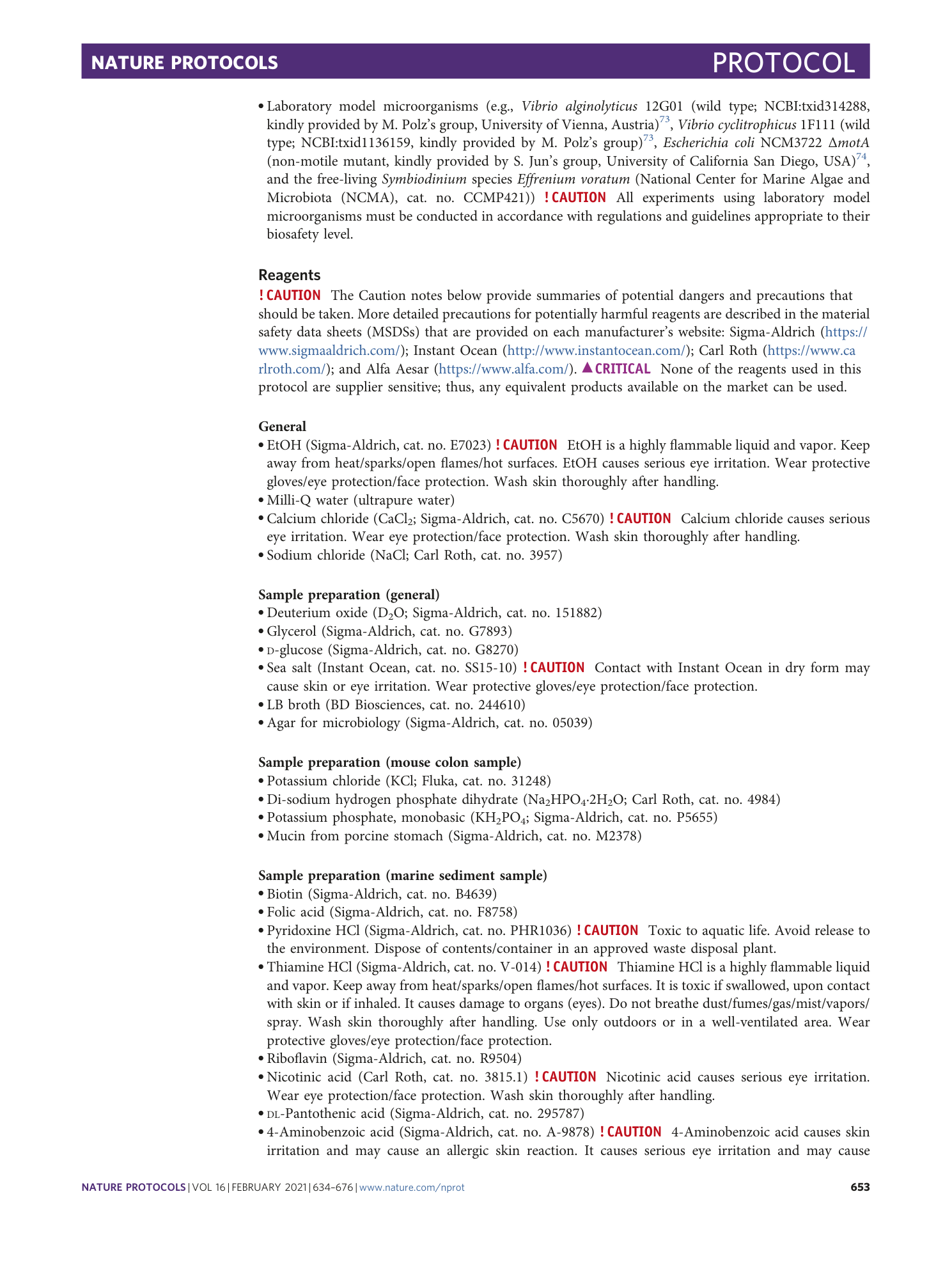
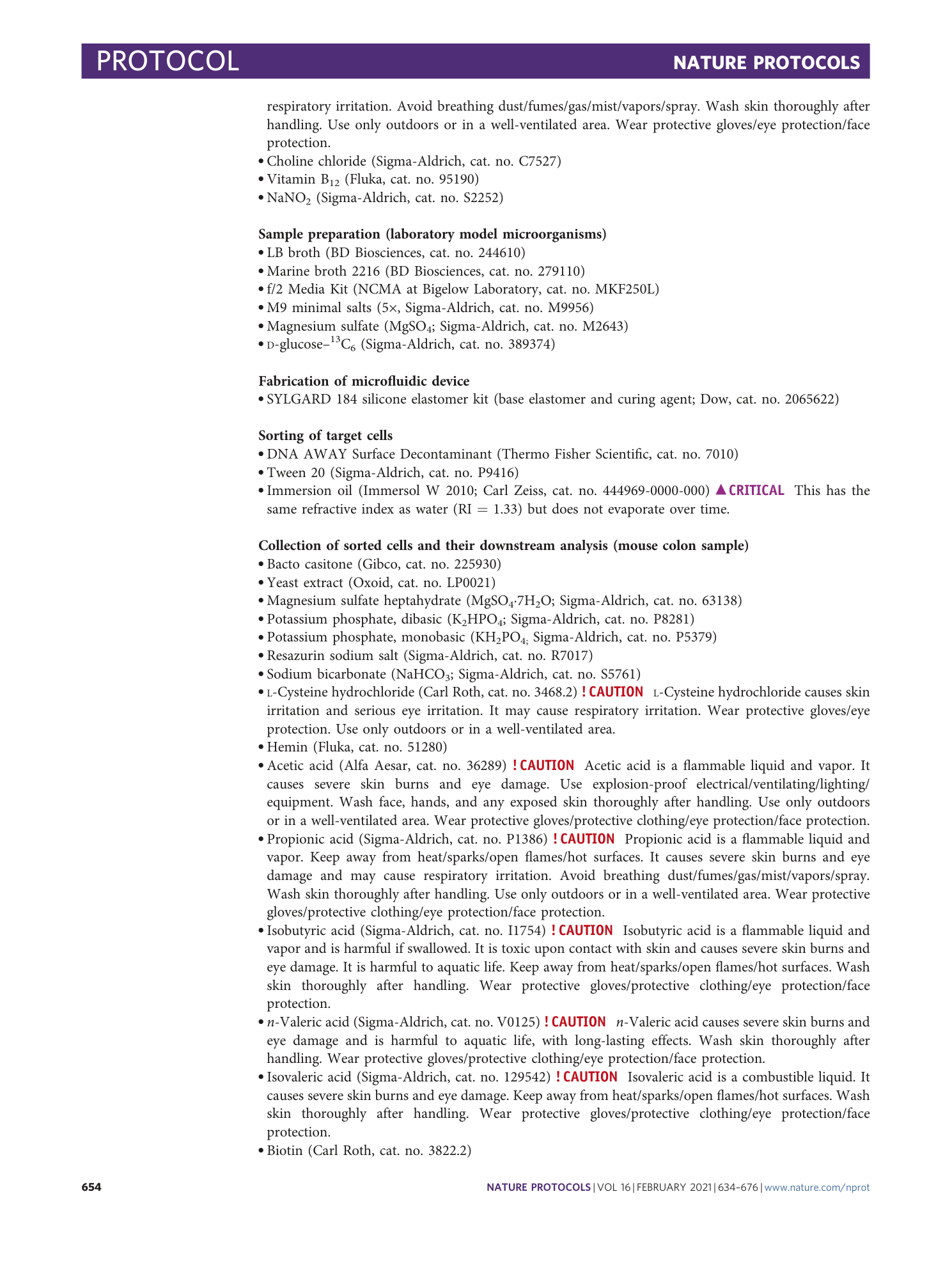
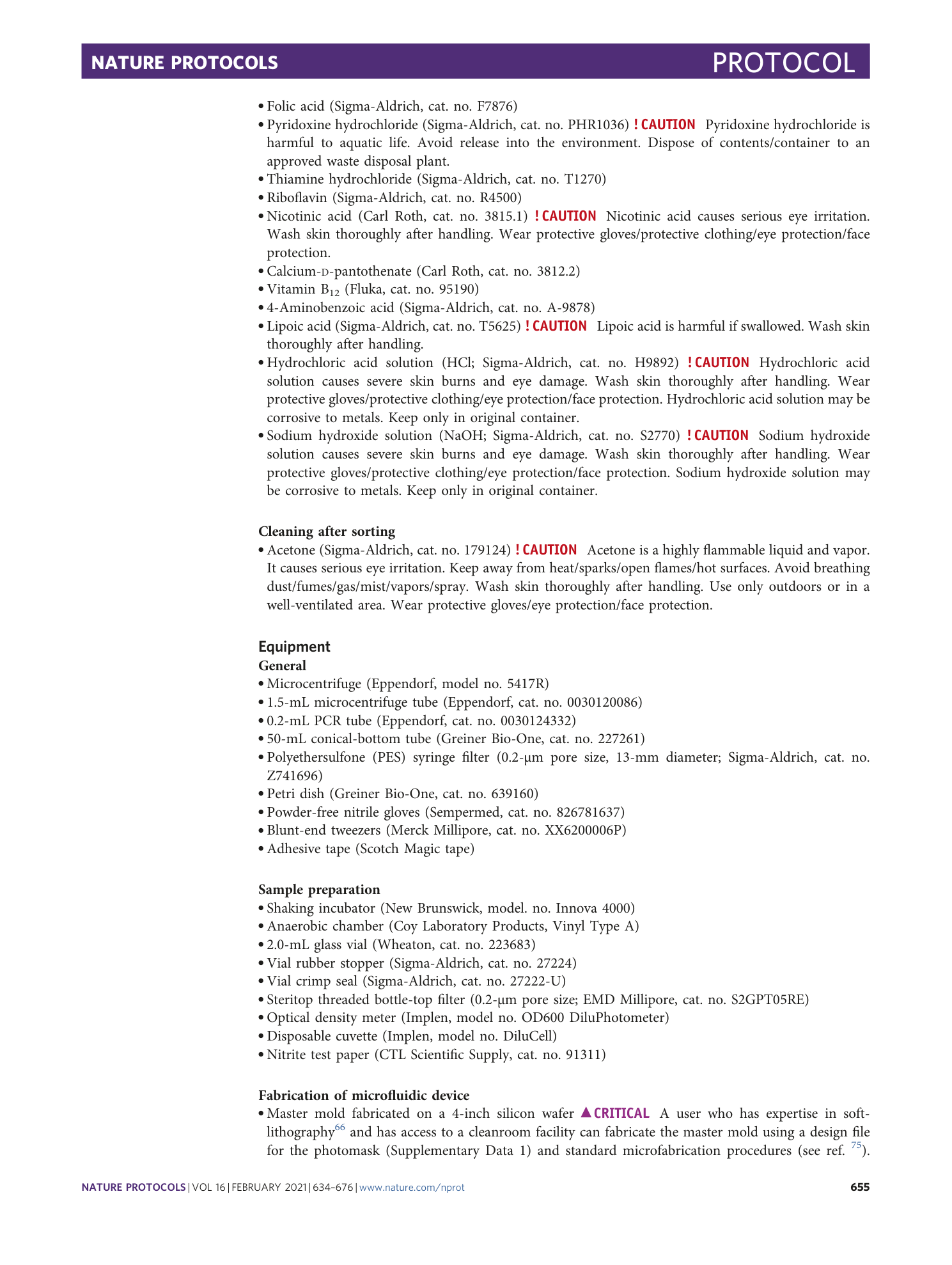
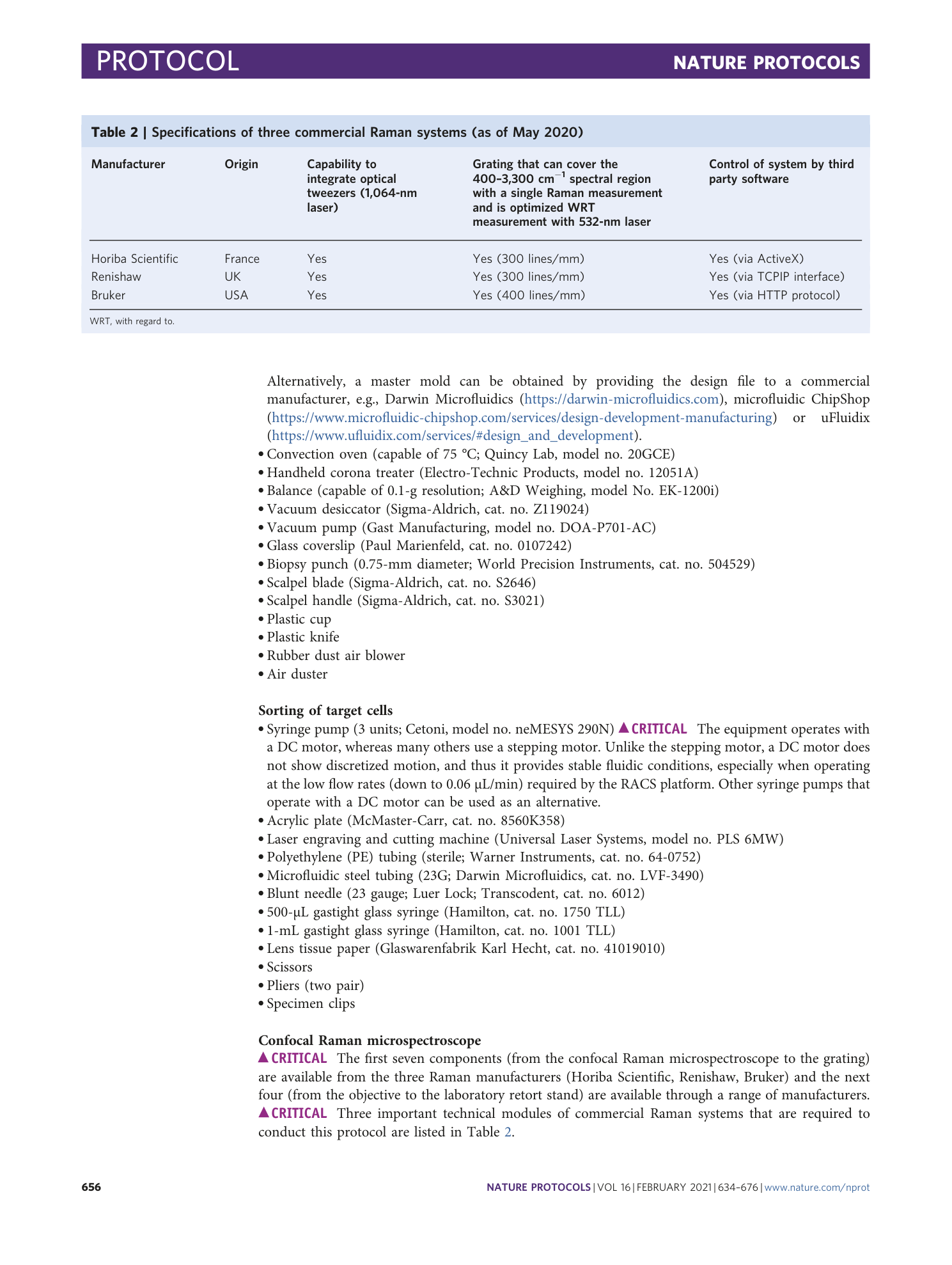
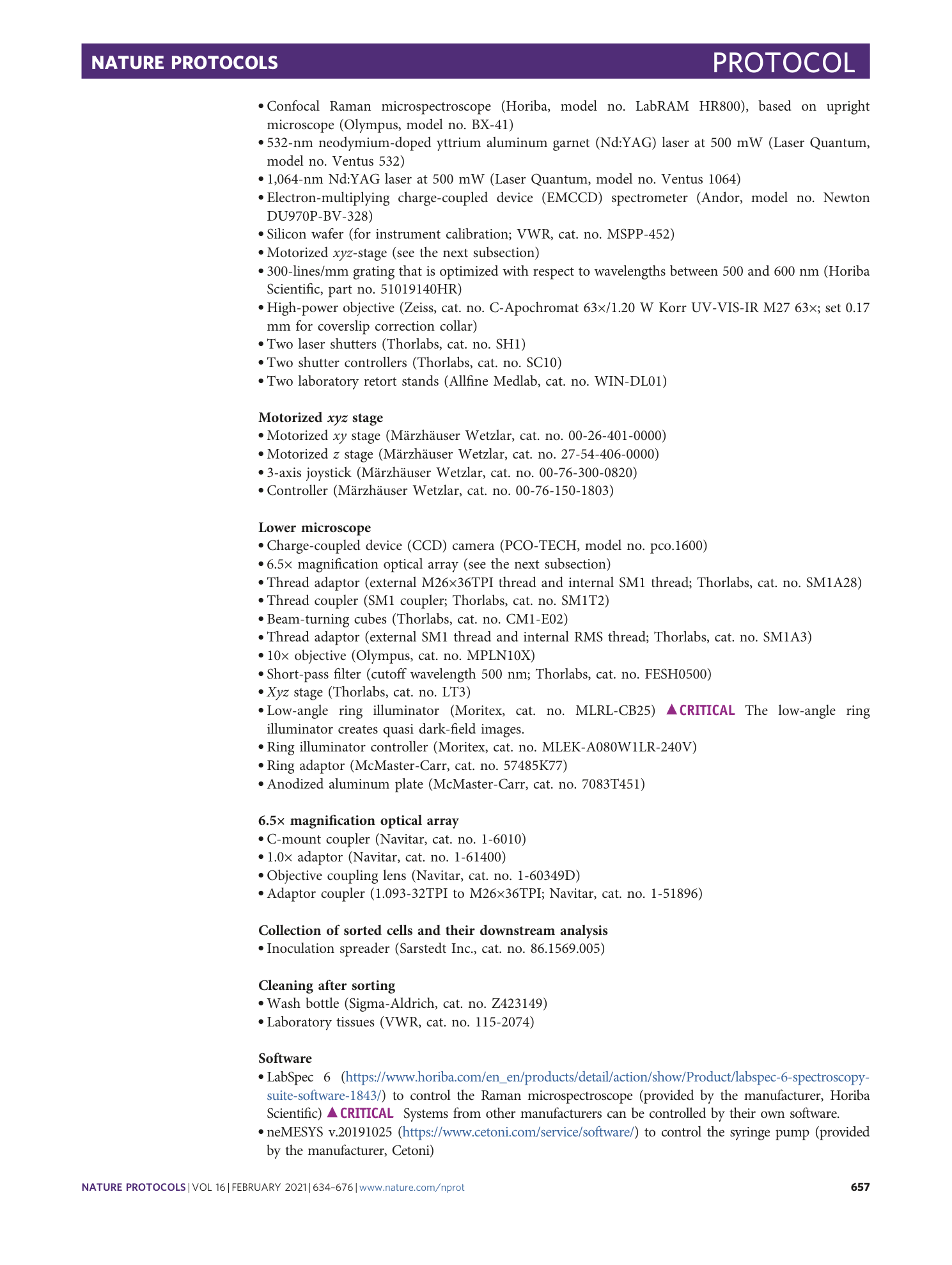

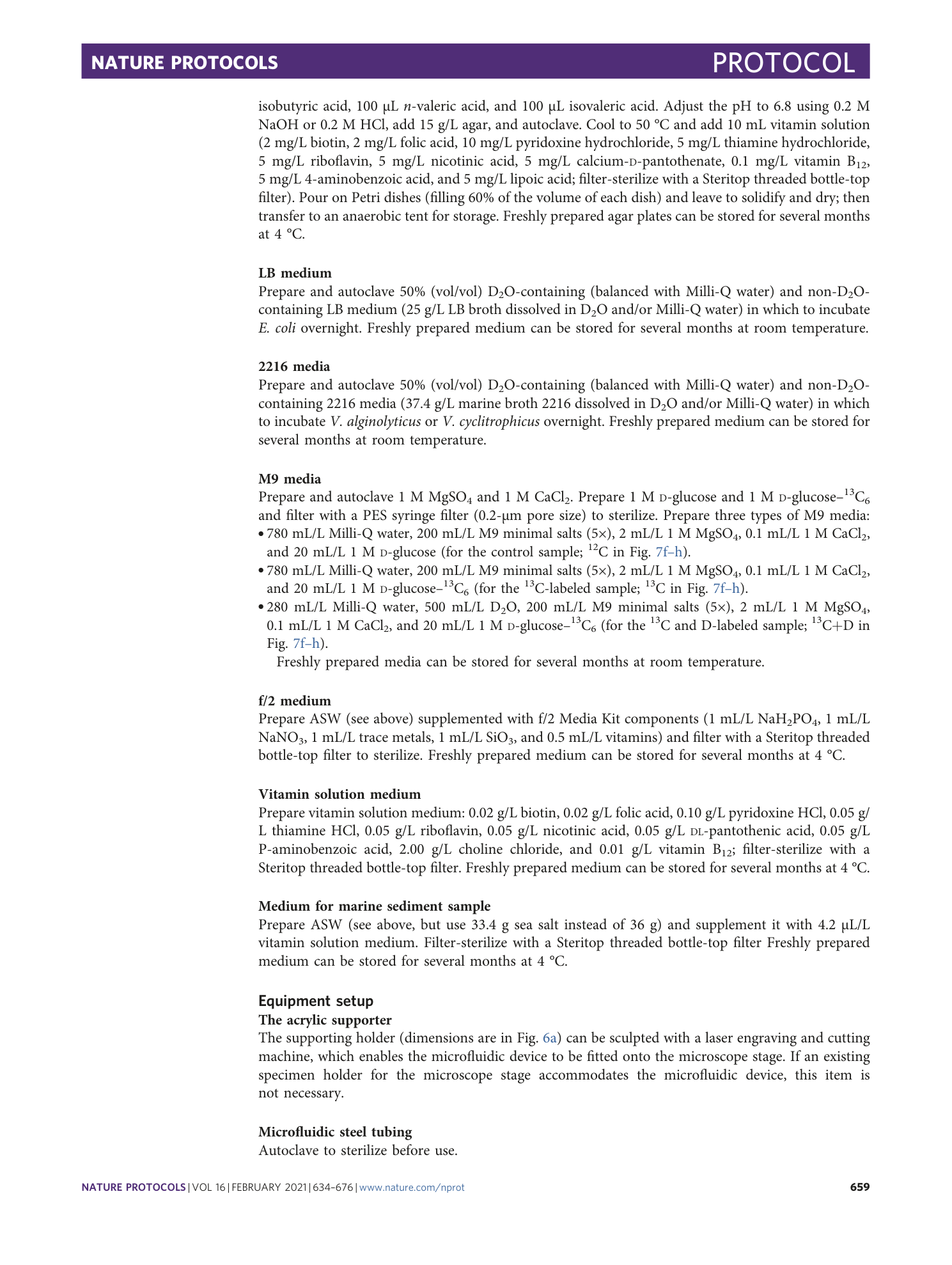

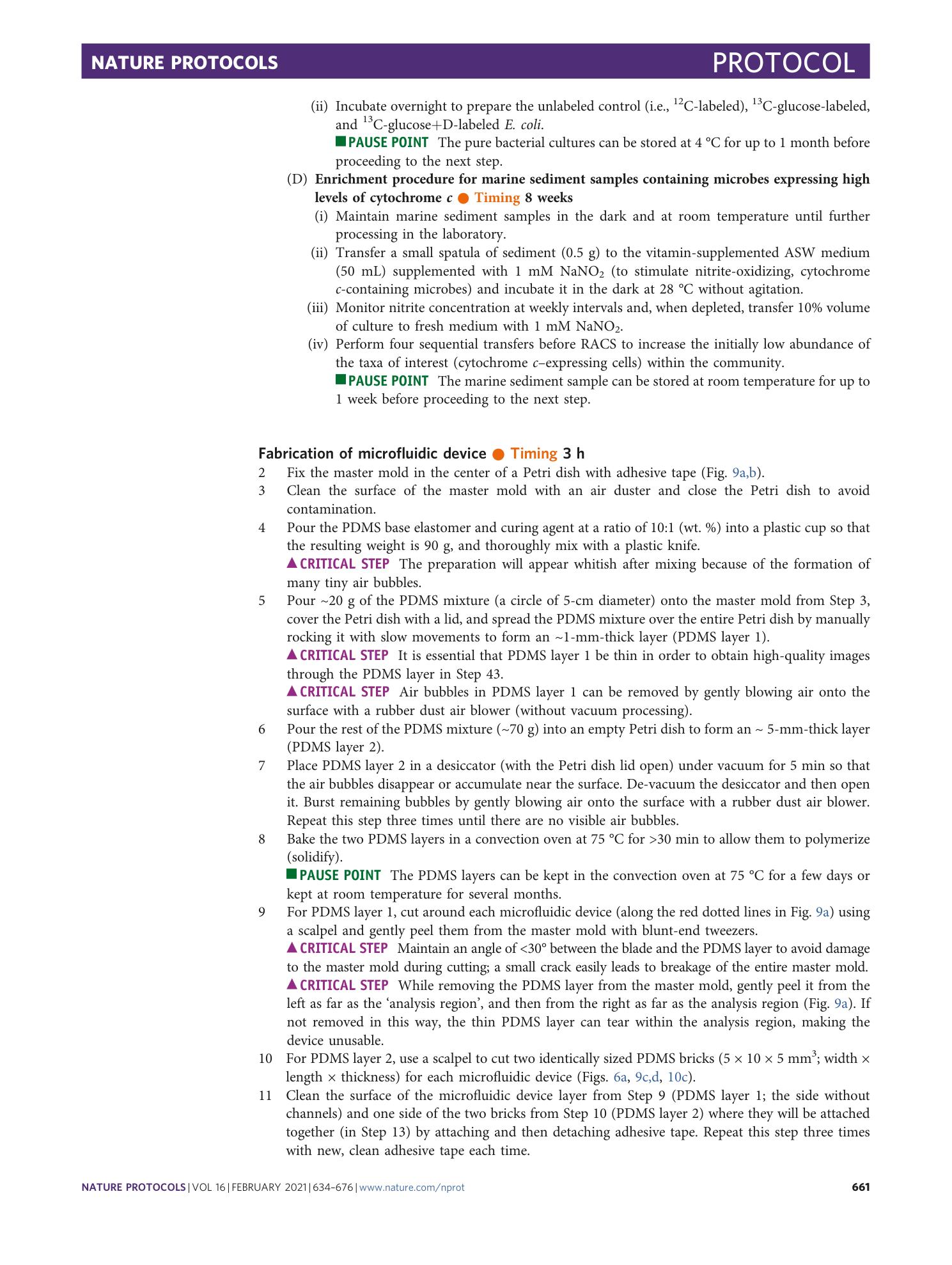

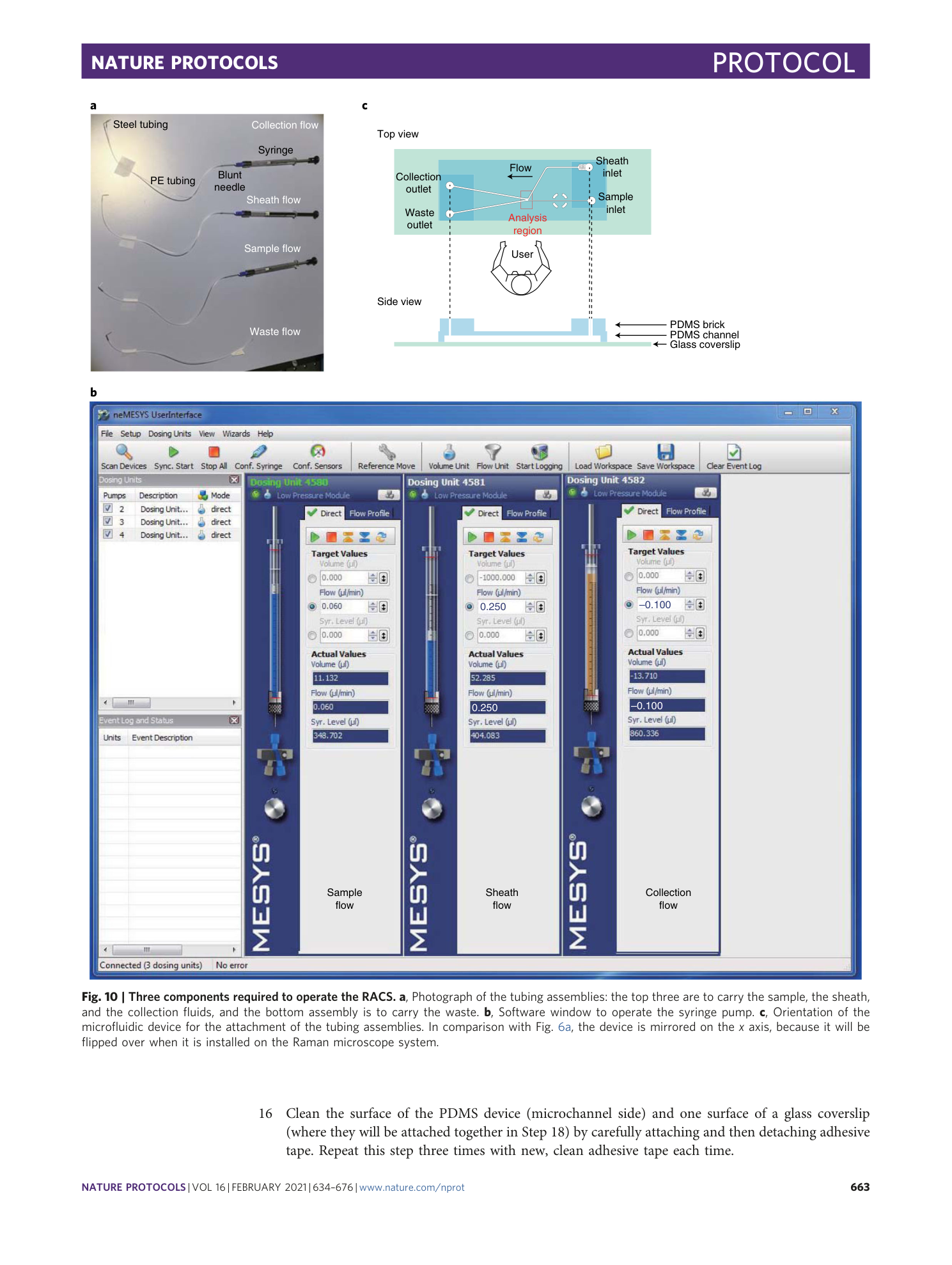

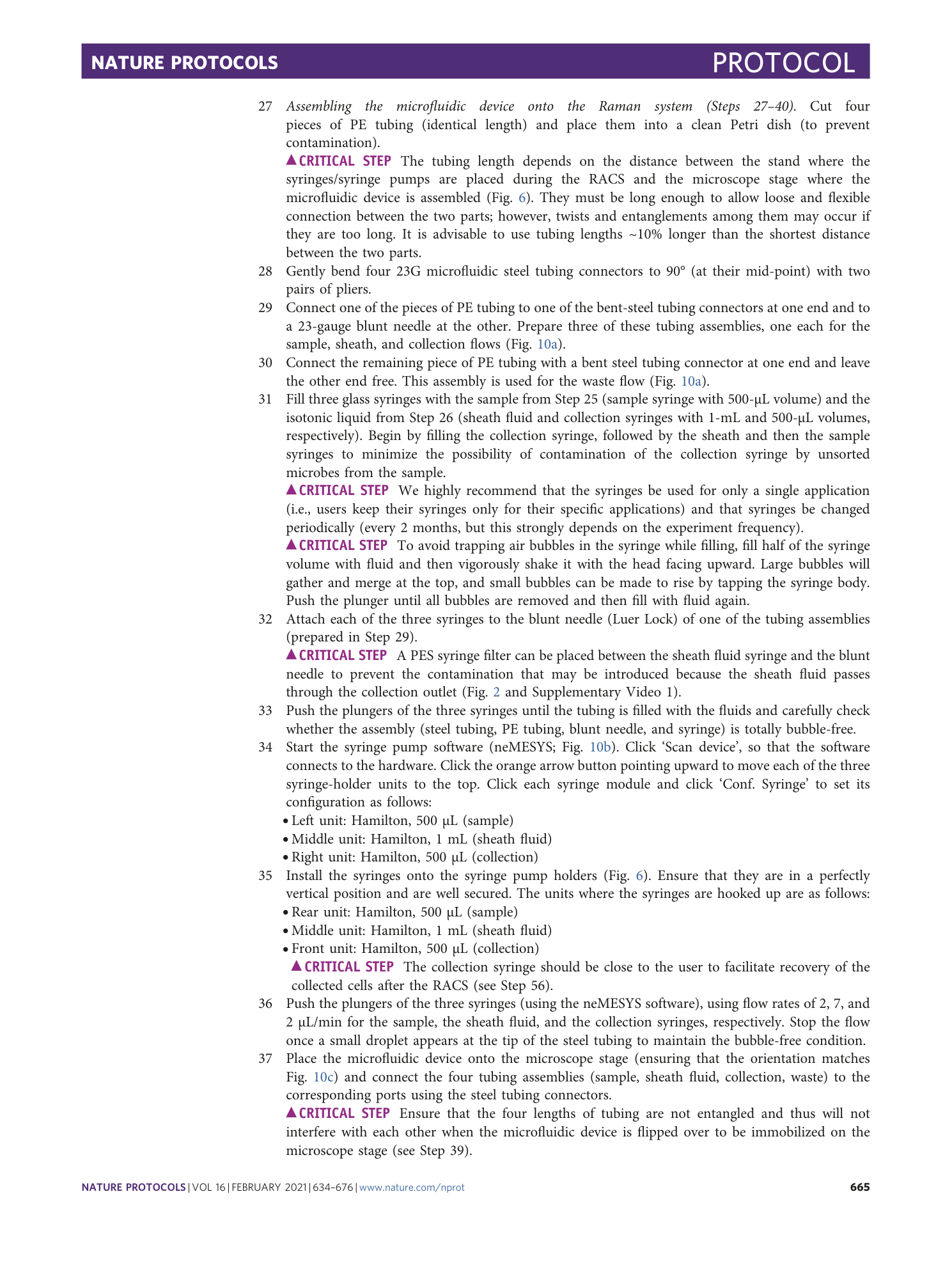
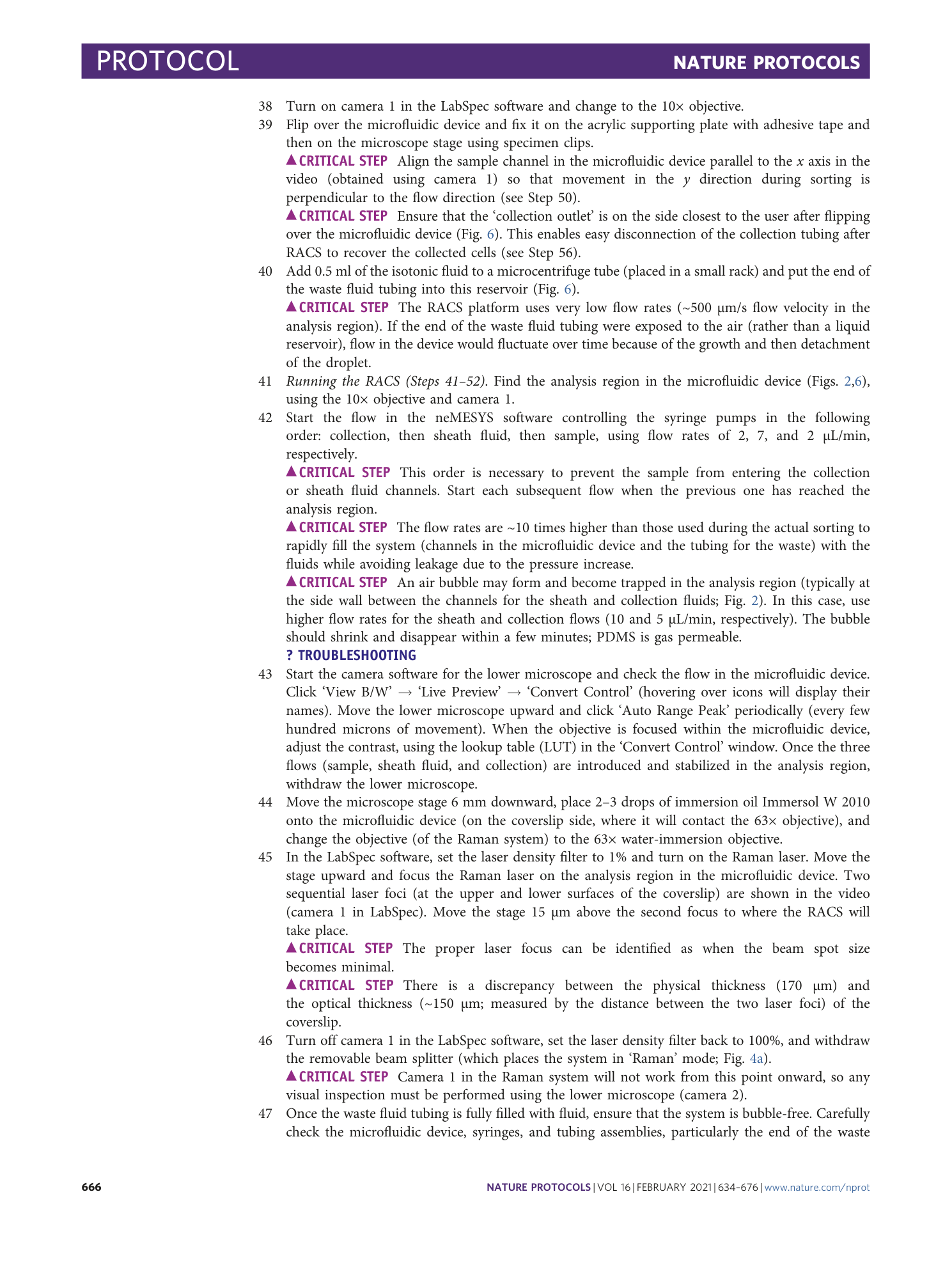
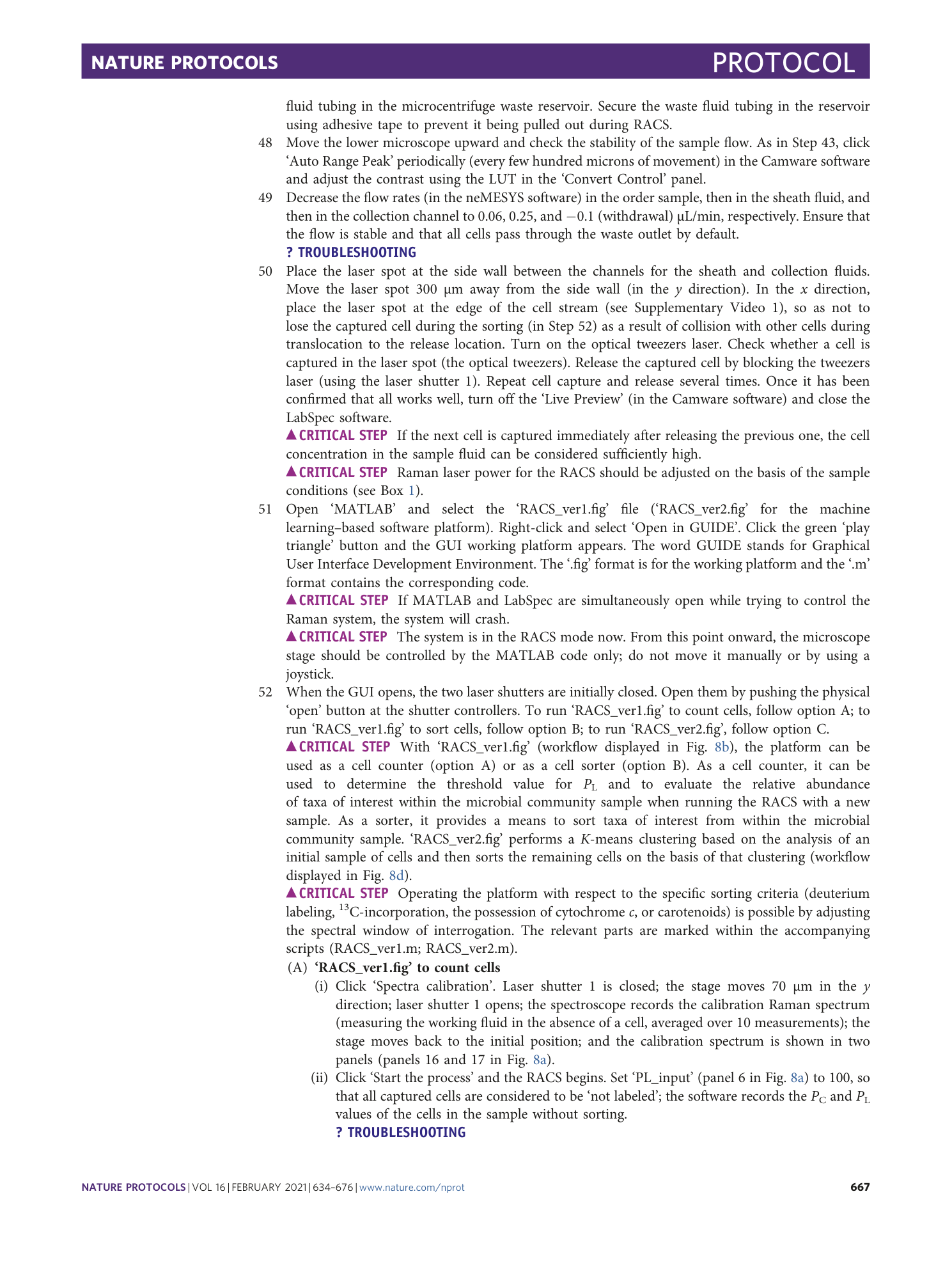
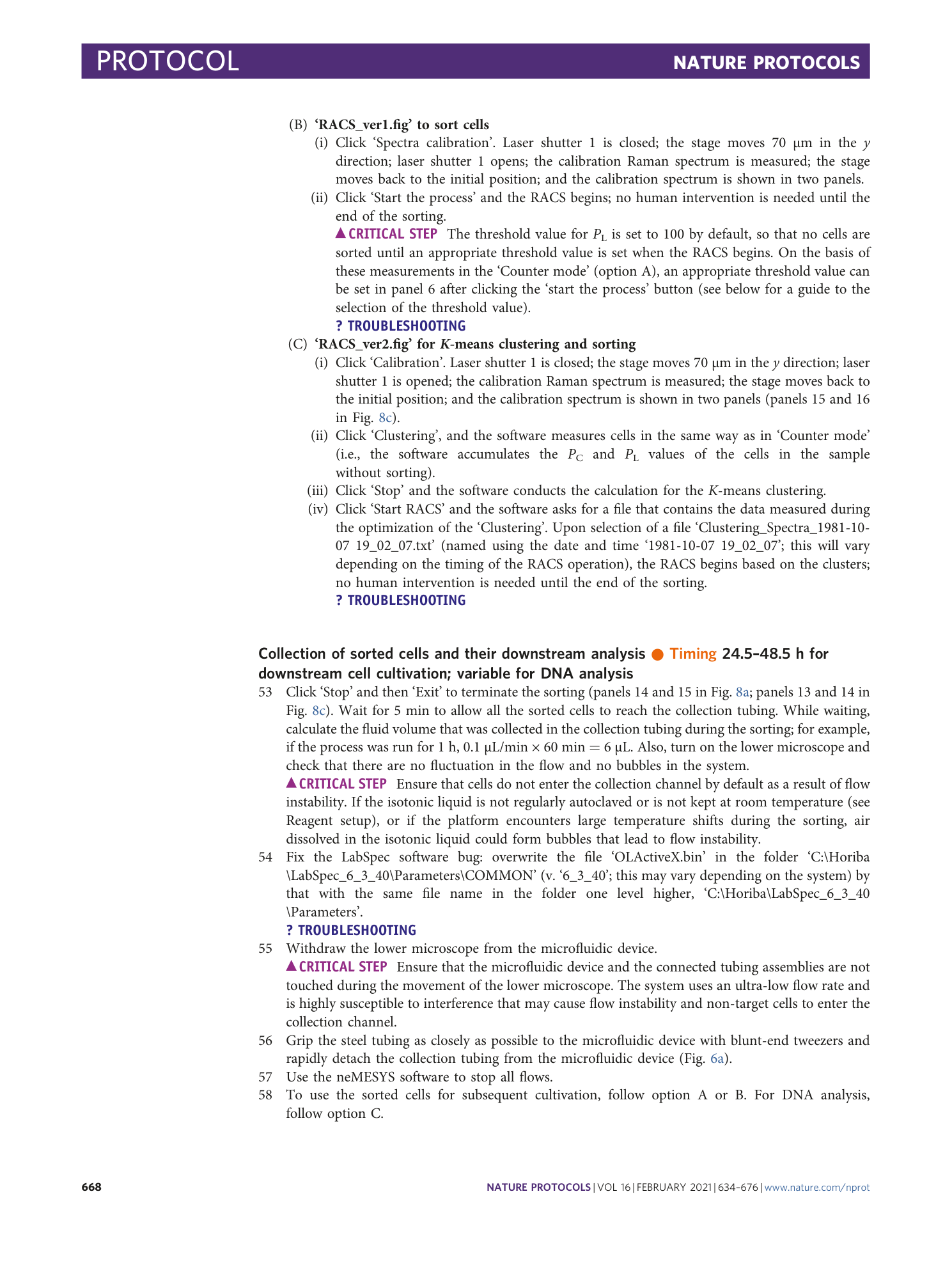
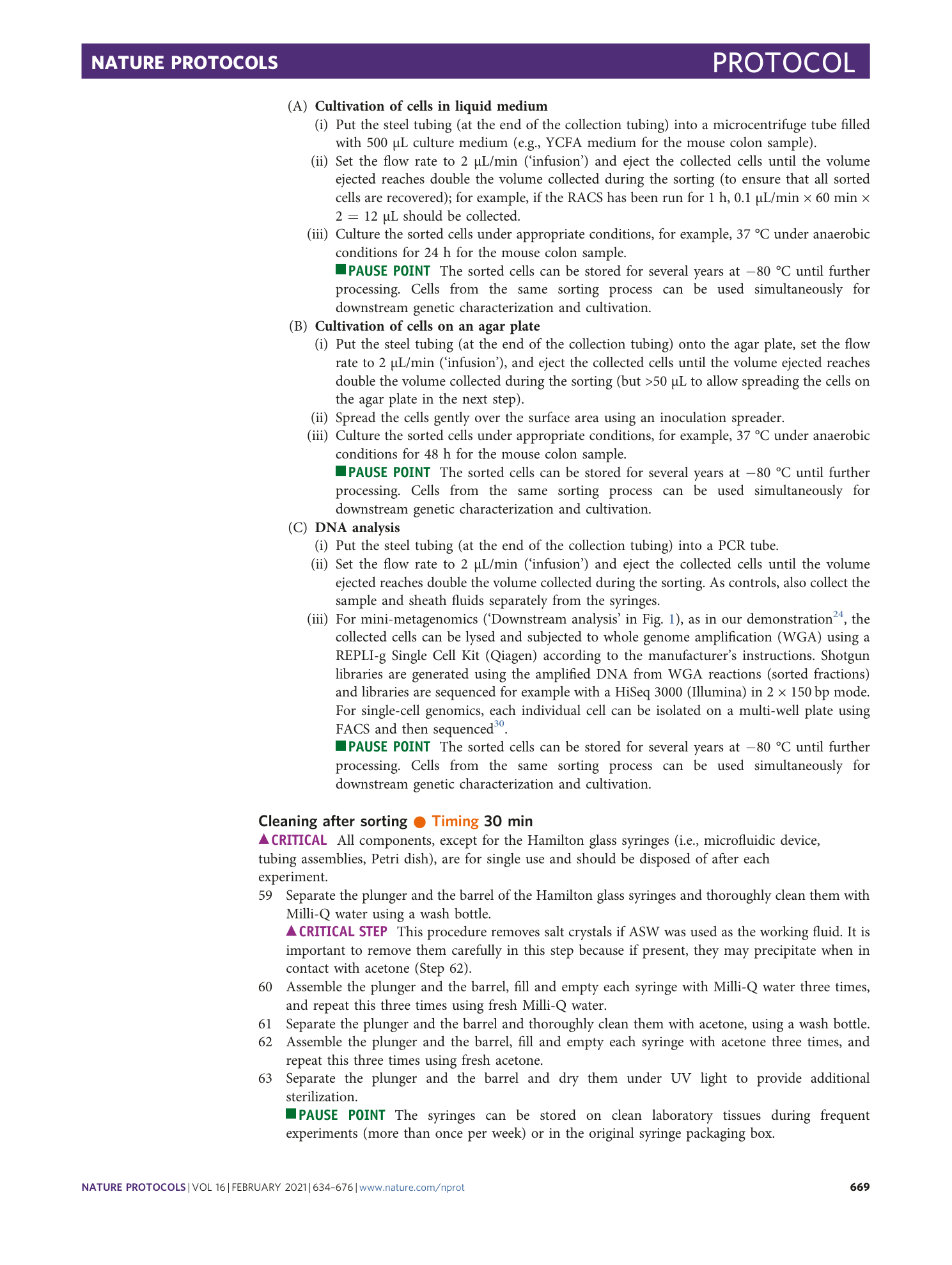
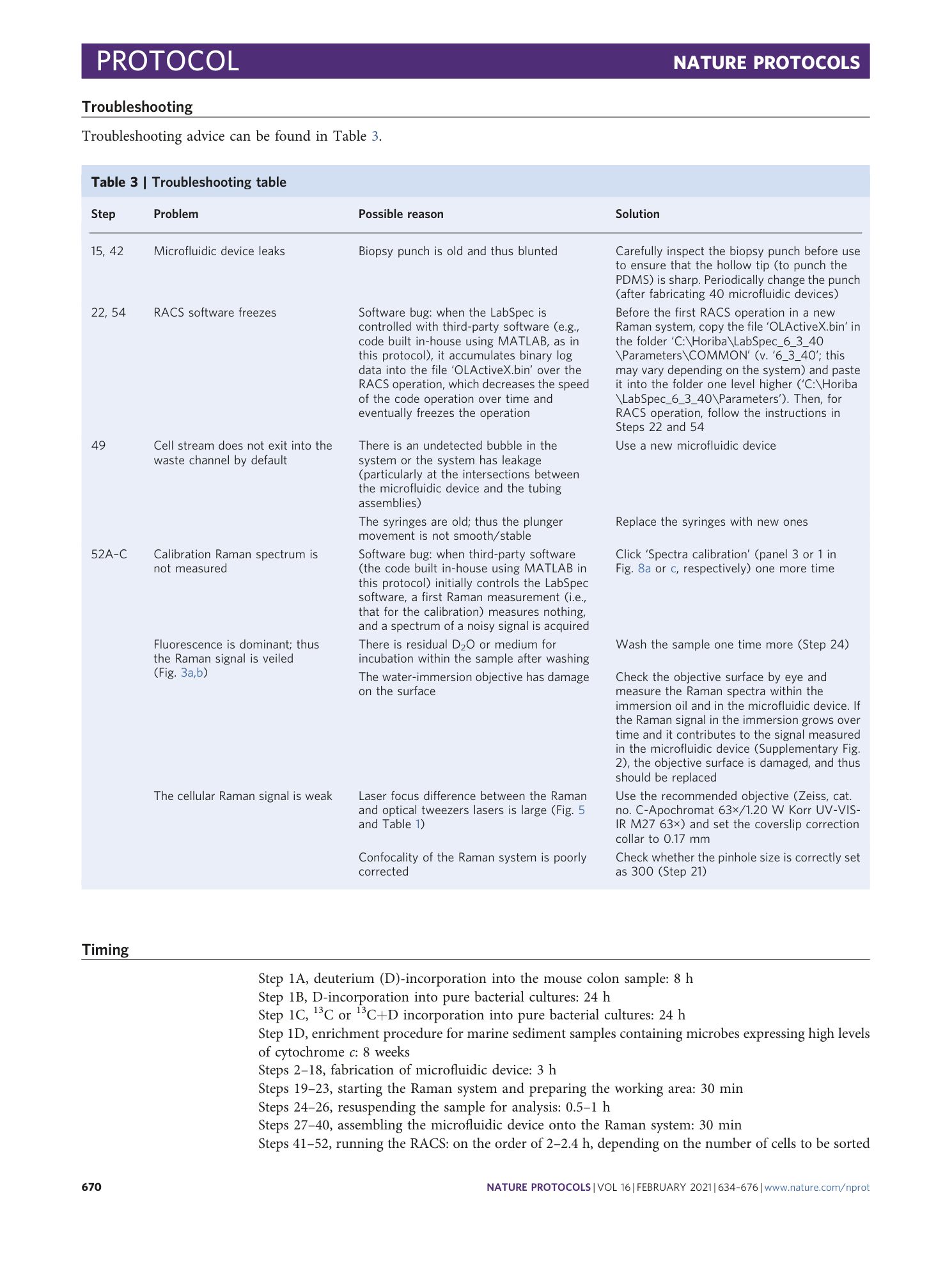

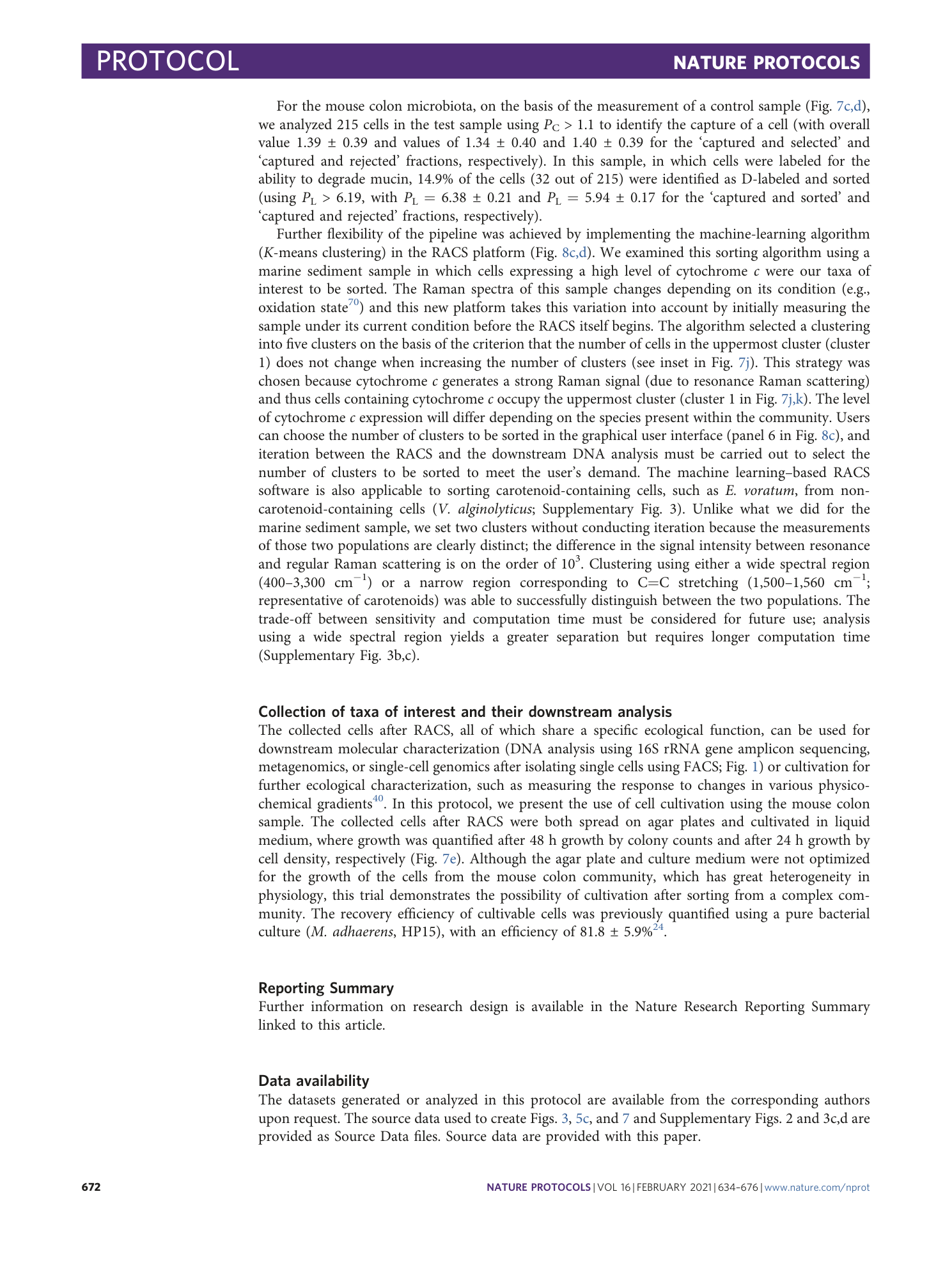
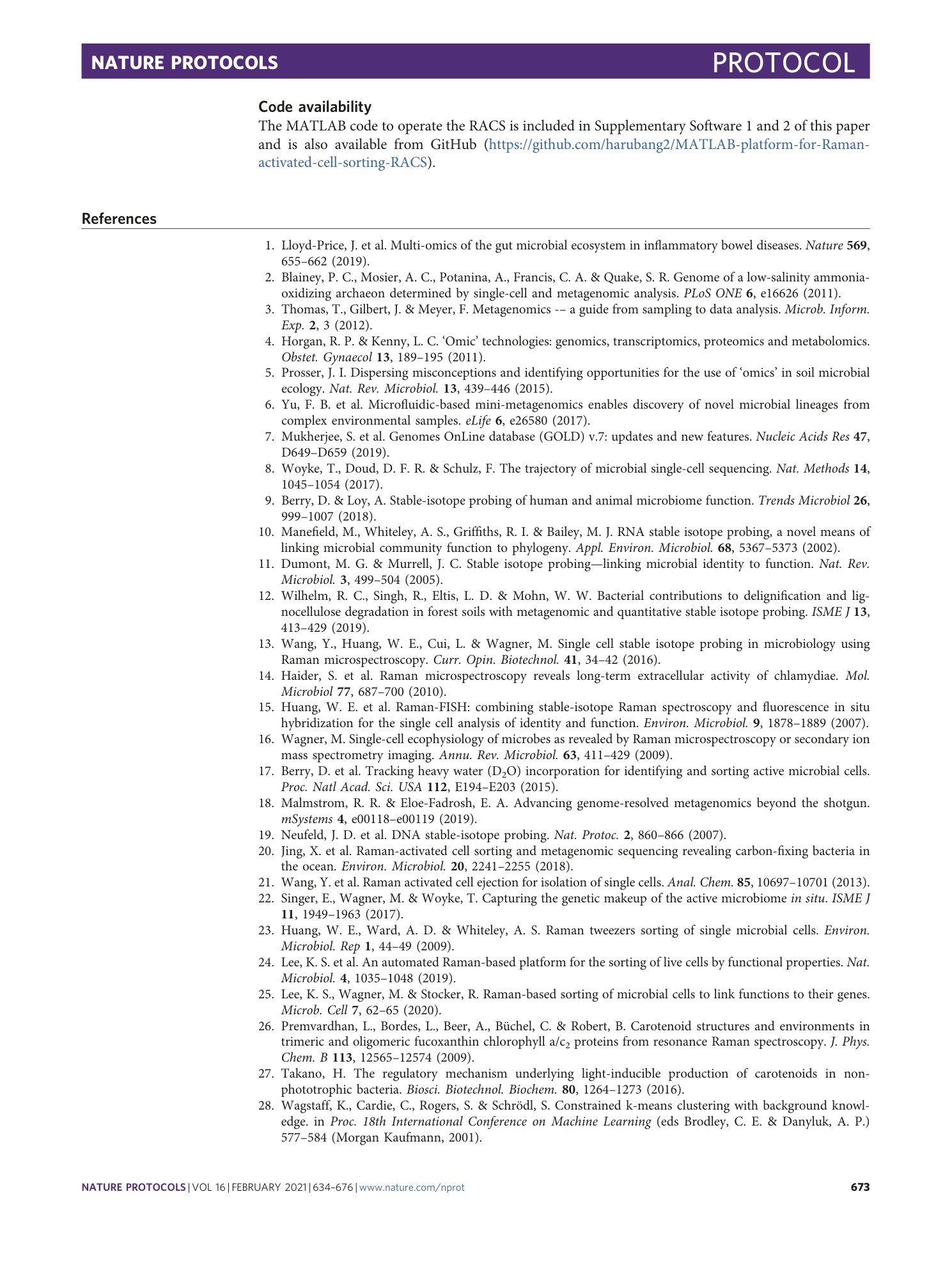
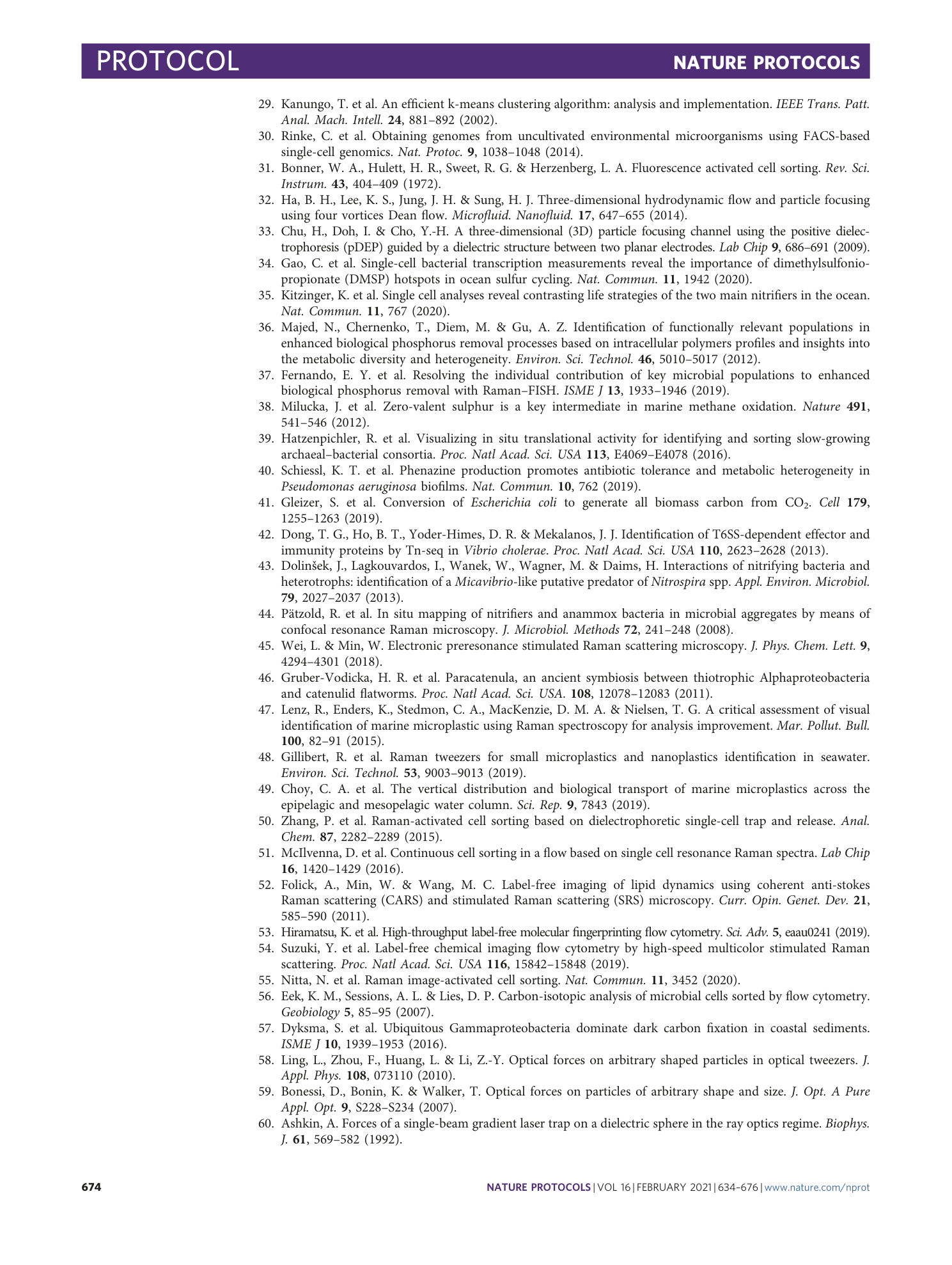
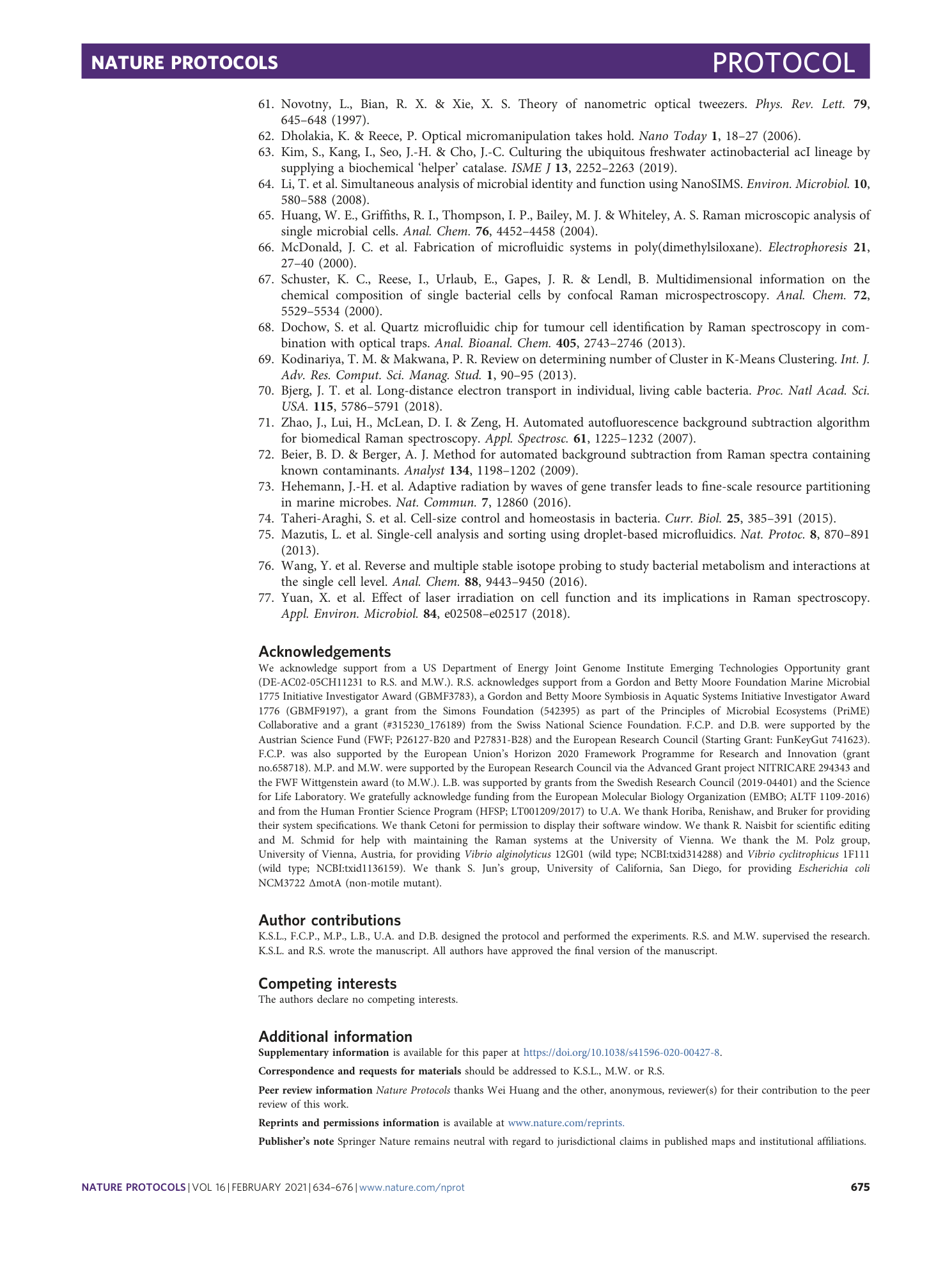



Supplementary information
Supplementary Information
Supplementary Figs. 1–3.
Reporting Summary
41596_2020_427_MOESM3_ESM.mp4
Supplementary Video 1 Raman-activated cell sorting (RACS) procedures . The movie is composed of four sections: (i) visualization of flow in the microfluidic device; (ii) system calibration; (iii) case 1, the process for a captured and selected cell (sorted); and (iv) case 2, the process for a captured and rejected cell (not sorted). In section (i), the two separate flow streams do not interfere with each other–the sample flow traverses the analysis region and exits into the waste outlet by default, whereas the flow carries a cell released at the ‘release location’ (blue box) through the collection outlet. Section (ii) shows the Raman measurement of the working fluid (in the absence of a cell) to be used to calculate the P C values (eqn. (1) in the main text) during the RACS. For sections (iii) and (iv), the left and right panels represent the CCD image (obtained by the lower microscope) and the corresponding operation of the RACS software, respectively. The details of the sorting procedures are described in the lower panel of the movie.
41596_2020_427_MOESM4_ESM.zip
Supplementary Data 1 Computer-aided design (CAD) diagrams for the microfluidic sorter . The CAD file is provided as a separate supplement, “Supplementary_Data_1.dxf”. Users with access to a cleanroom facility can prepare the device from scratch (i.e., fabrication from a master mold using this photomask design and creation of the PDMS microfluidic device), whereas those who do not have expertise in microfabrication can ask commercial manufacturers to fabricate the master mold and then fabricate the PDMS microfluidic device in their laboratory.
Supplementary Data 2
Statistical source data for Supplementary Fig. 2
Supplementary Data 3
Statistical source data for Supplementary Fig. 3cd
41596_2020_427_MOESM7_ESM.zip
Supplementary Software 1 MATLAB GUI platform and corresponding script code to operate the RACS . ‘fig’ and ‘m’ files are bound together and thus should be identically named. See ‘README.pdf’ file that accompanies in the same zip file for system requirements and instructions to run this code.
41596_2020_427_MOESM8_ESM.zip
Supplementary Software 2 MATLAB GUI platform and corresponding script code to operate the RACS based on a machine-learning ( **K ** -means clustering) algorithm . ‘fig’ and ‘m’ files are bound together and thus should be identically named. See ‘README.pdf’ file that accompanies in the same zip file for system requirements and instructions to run this code.

